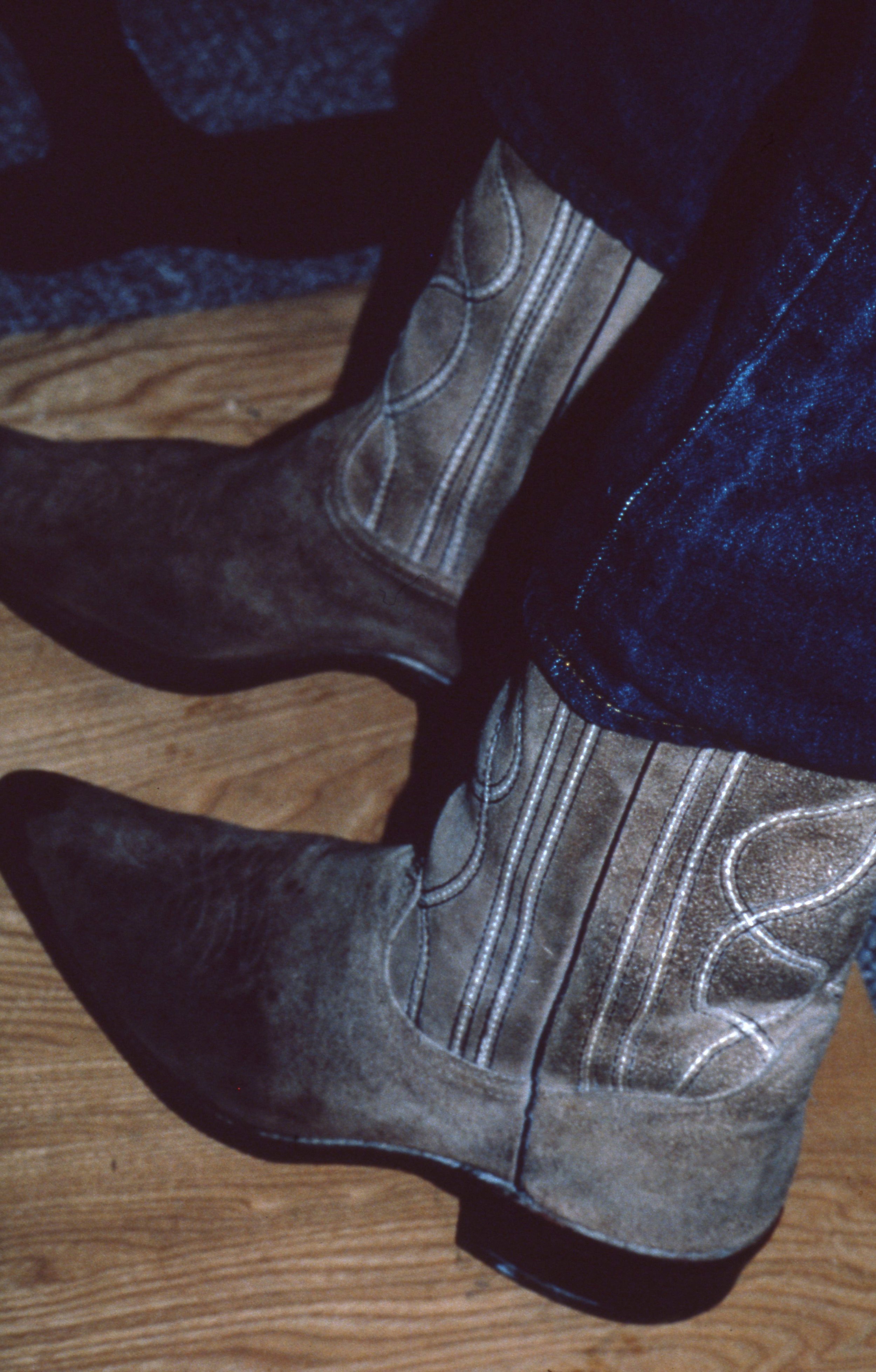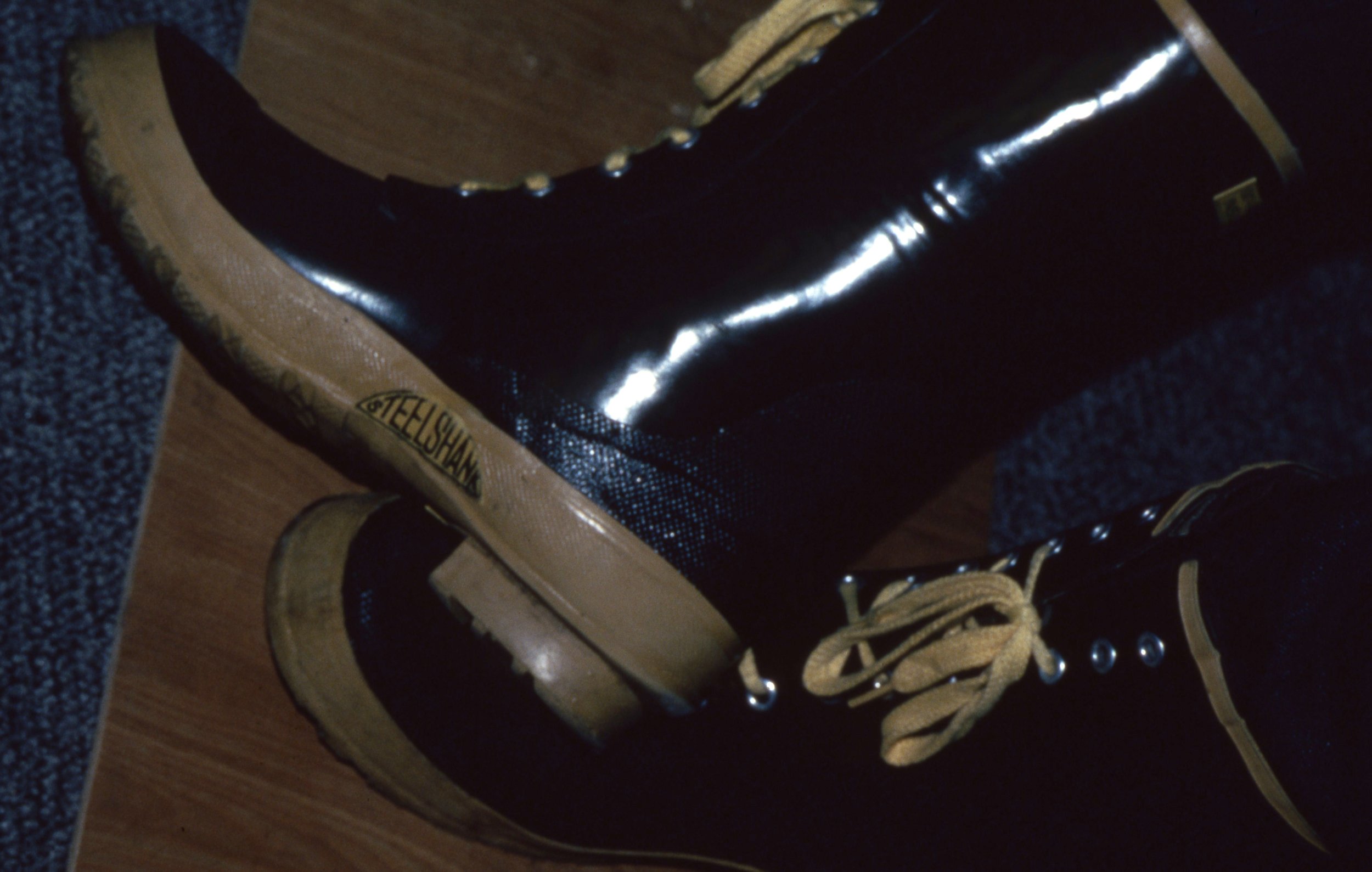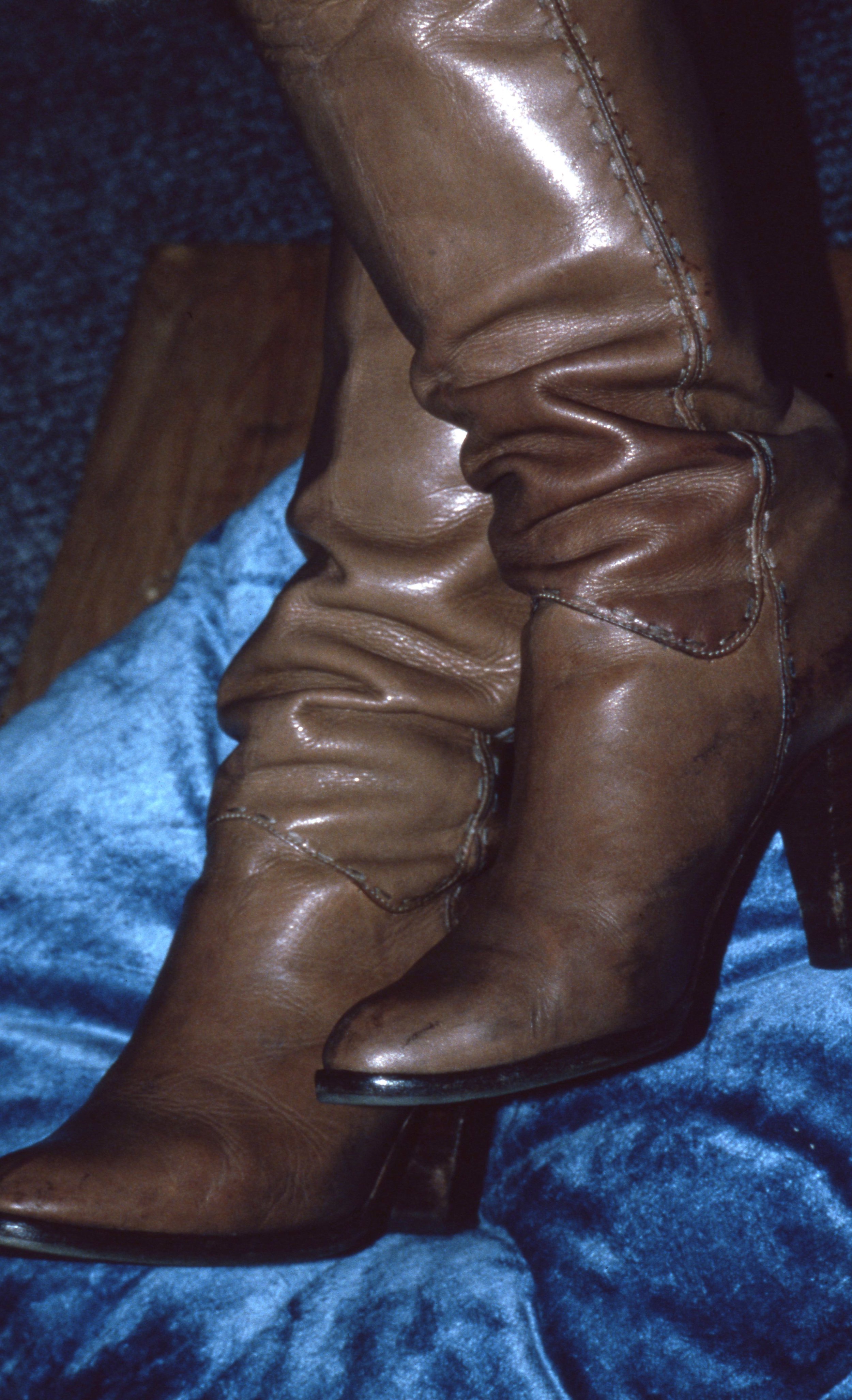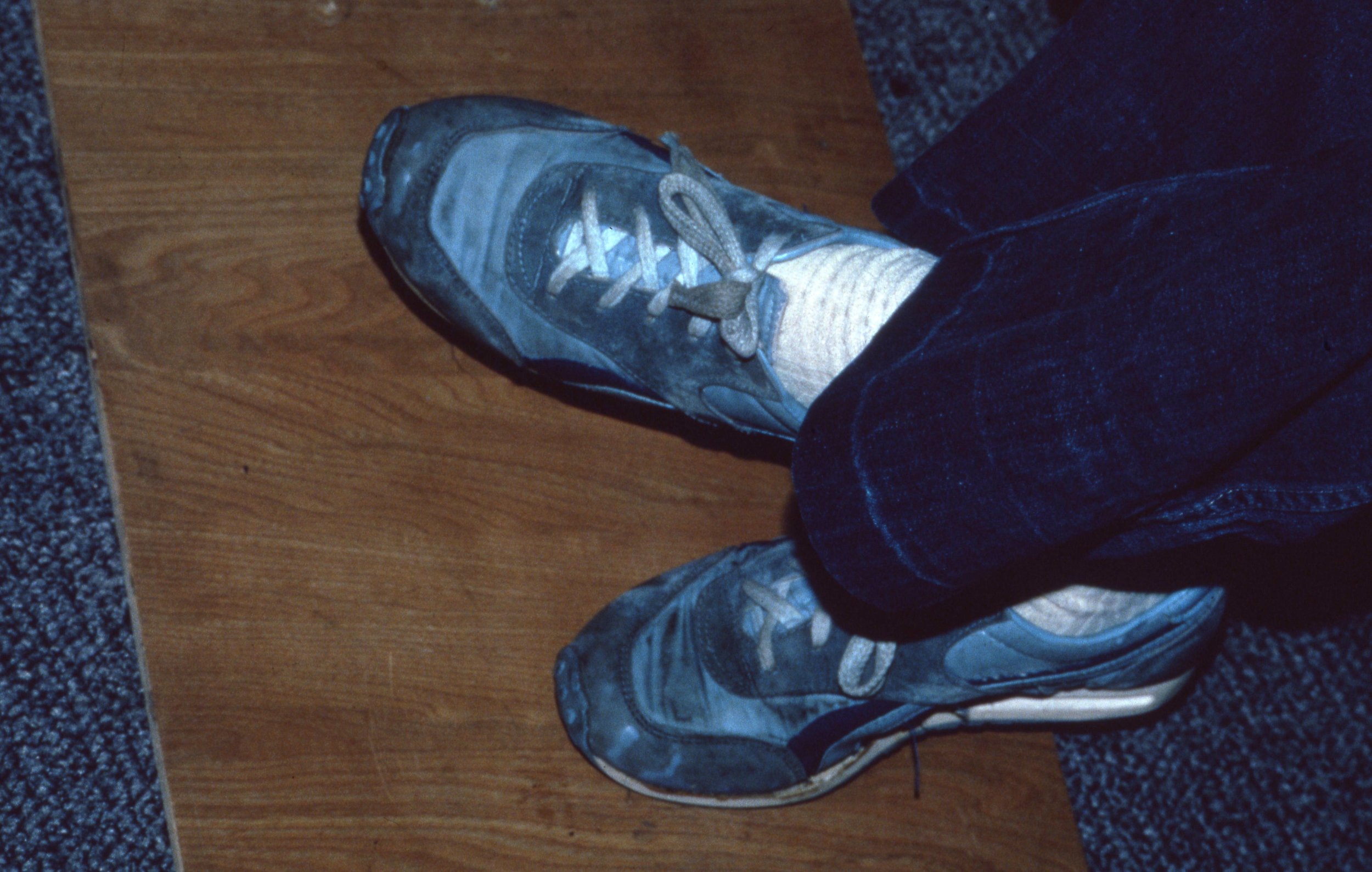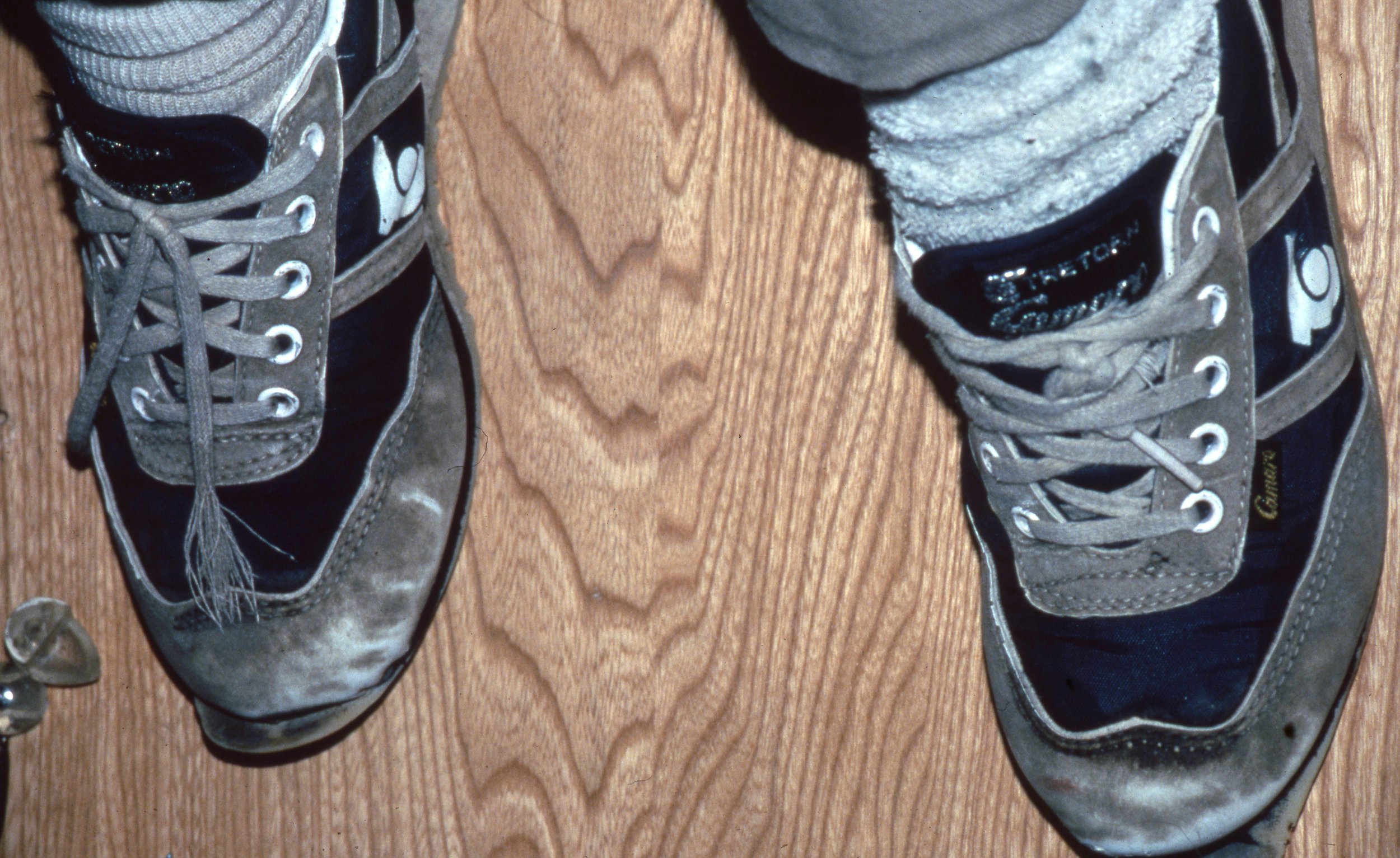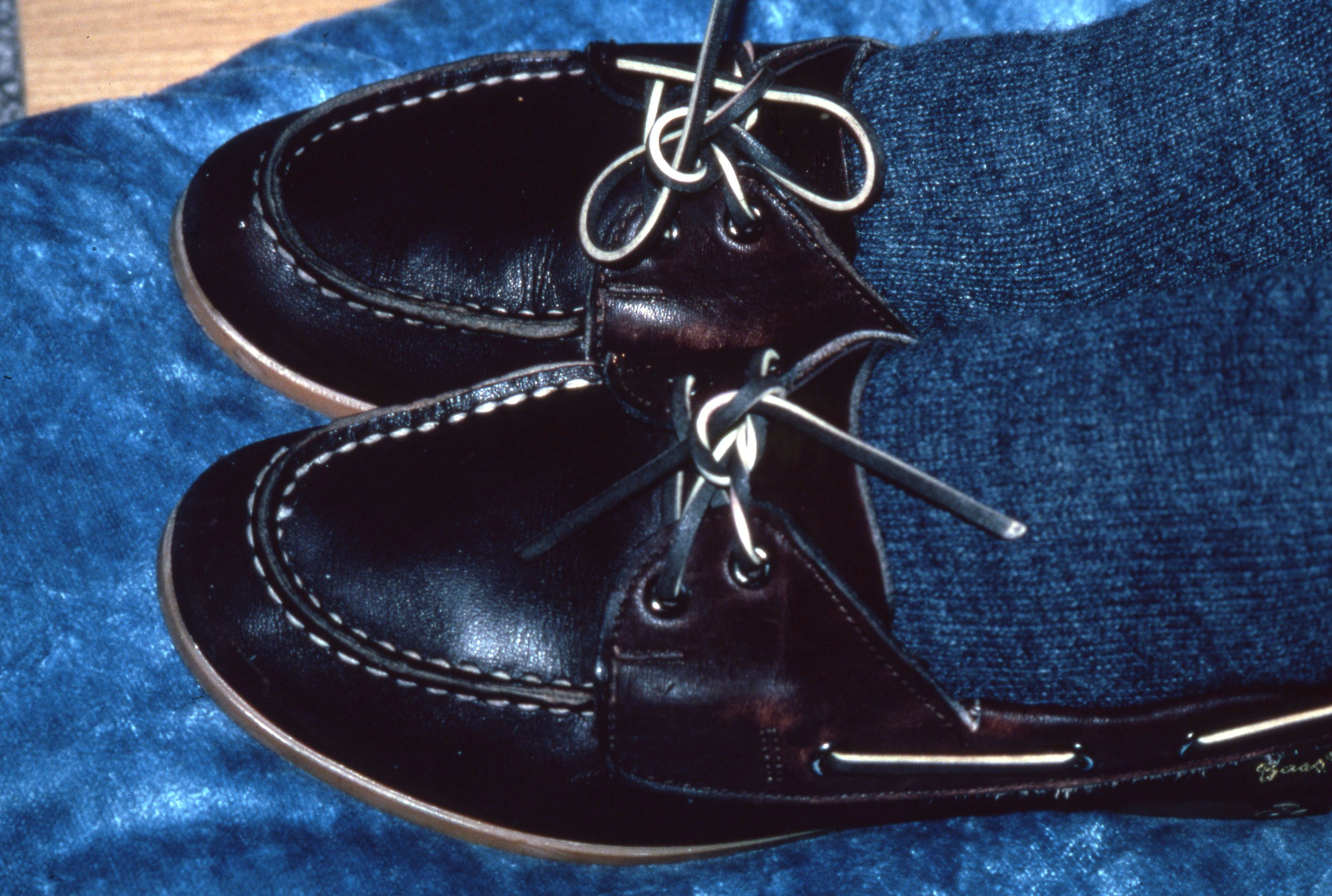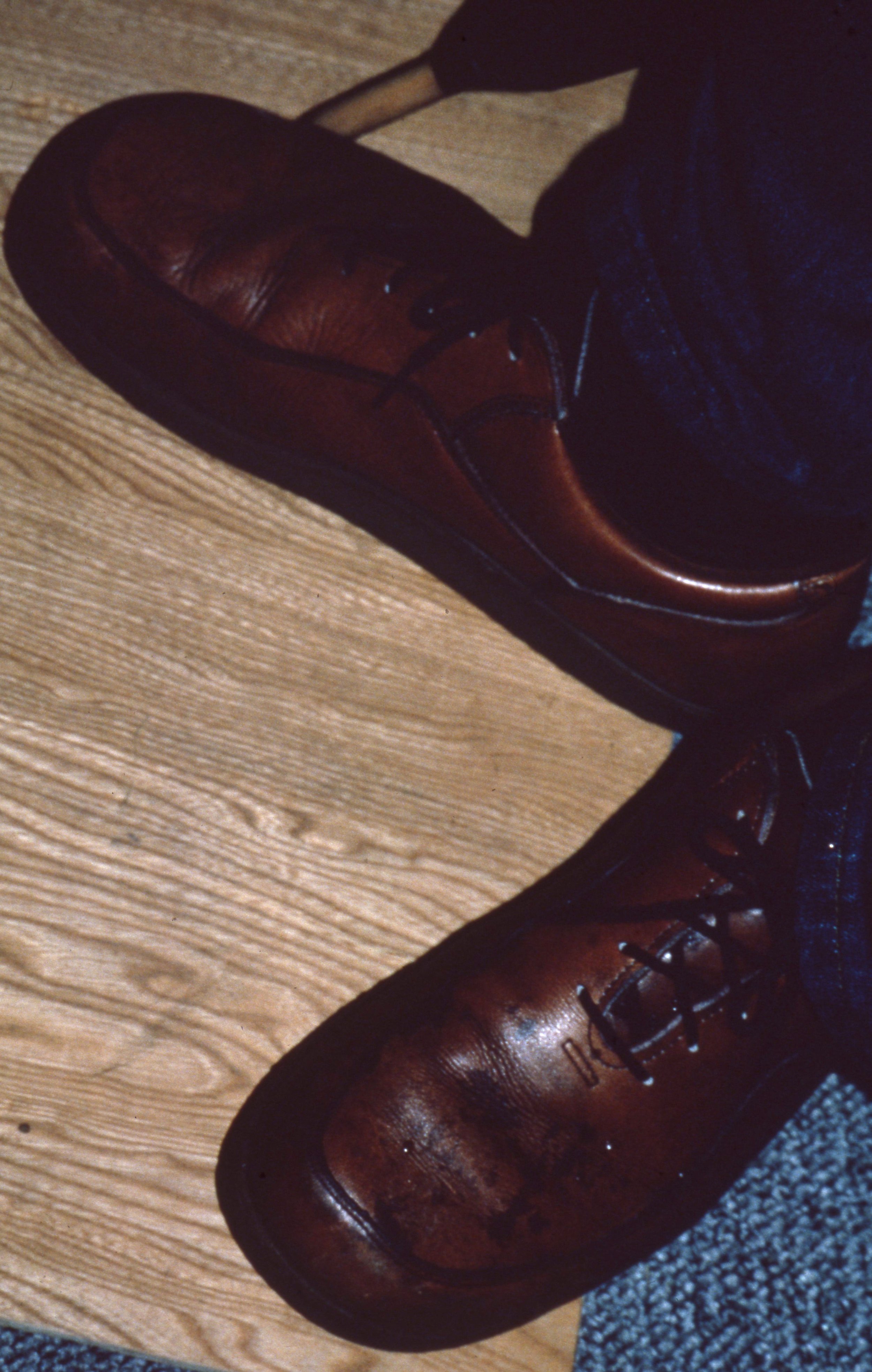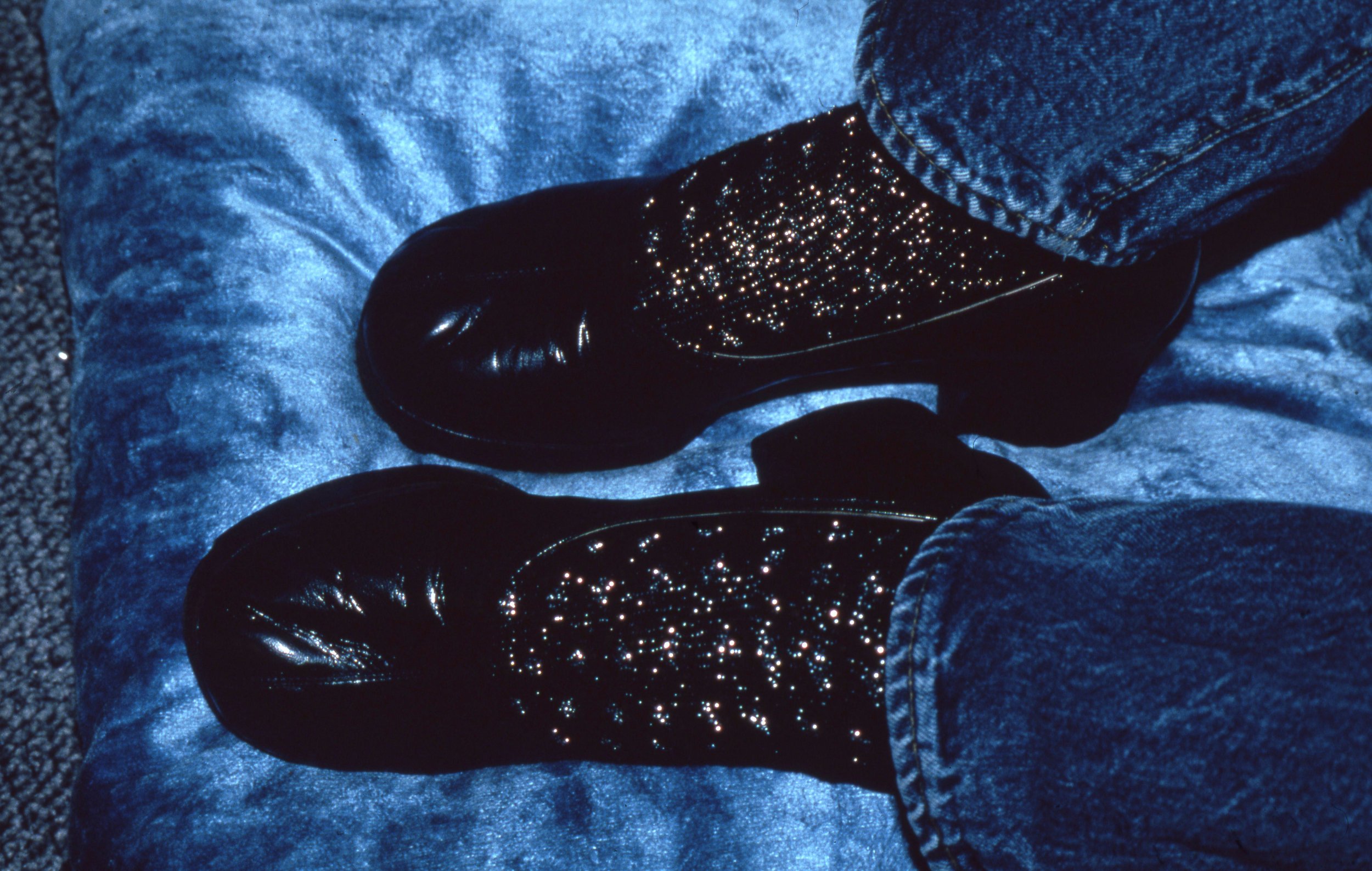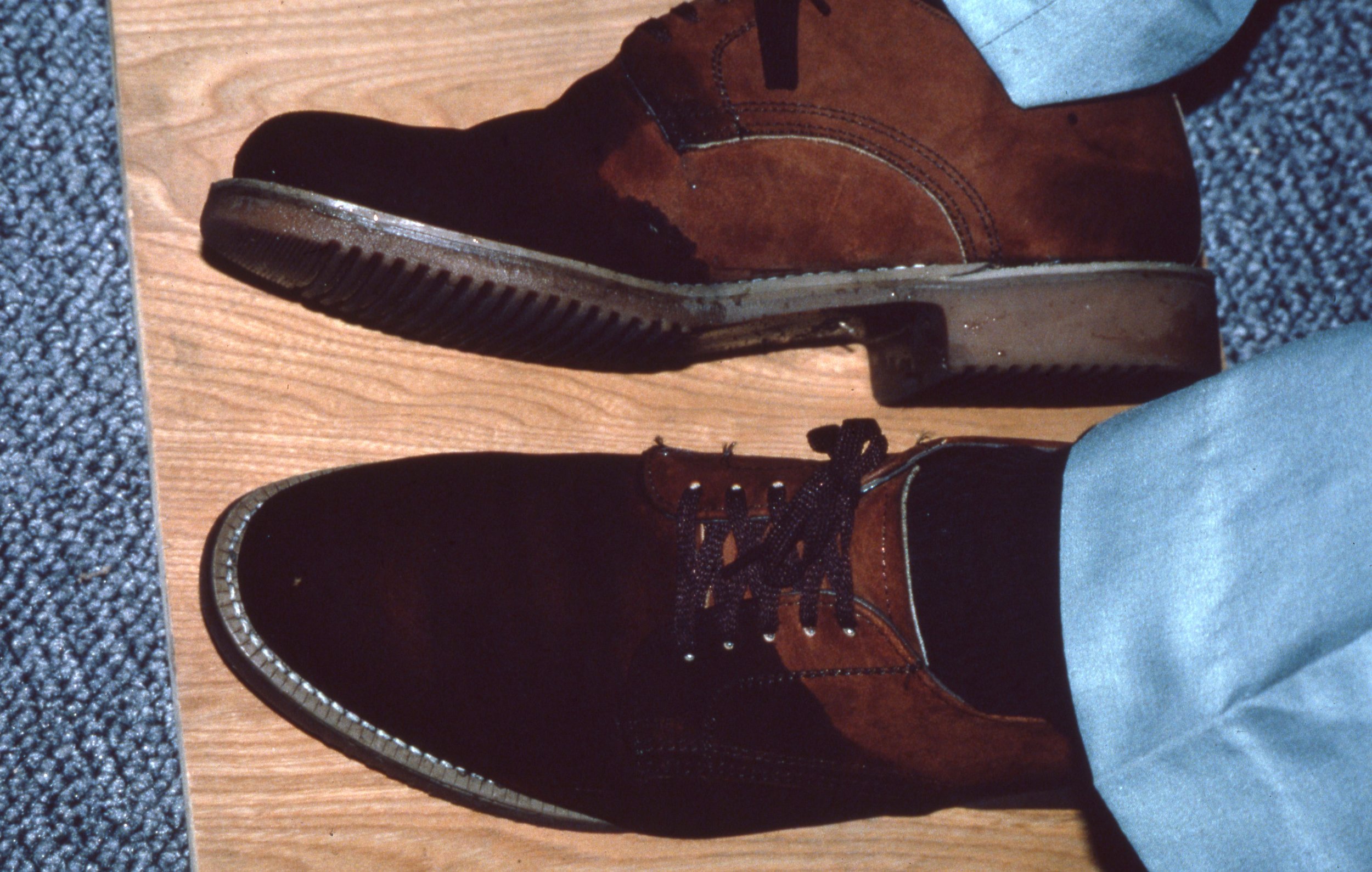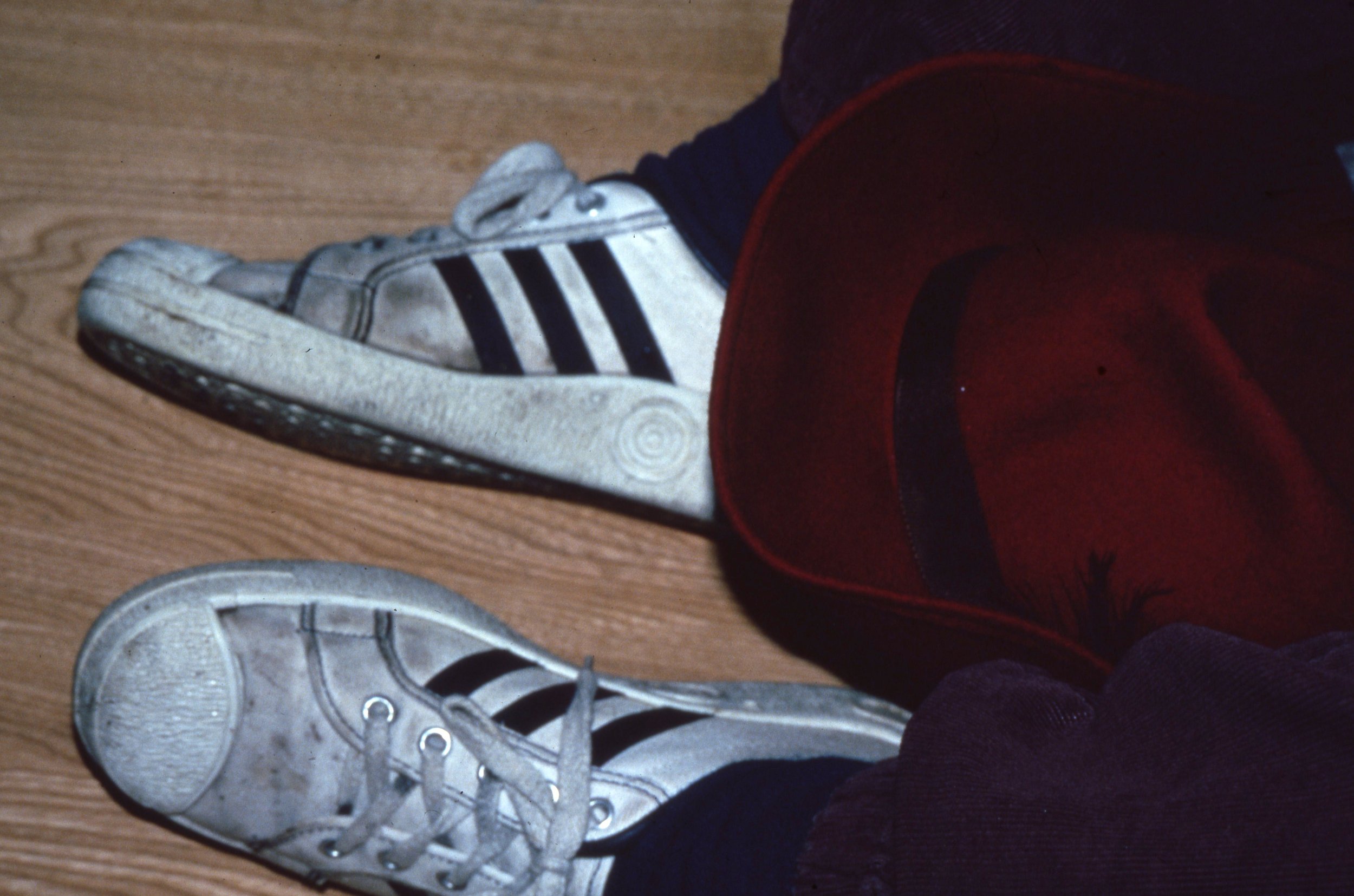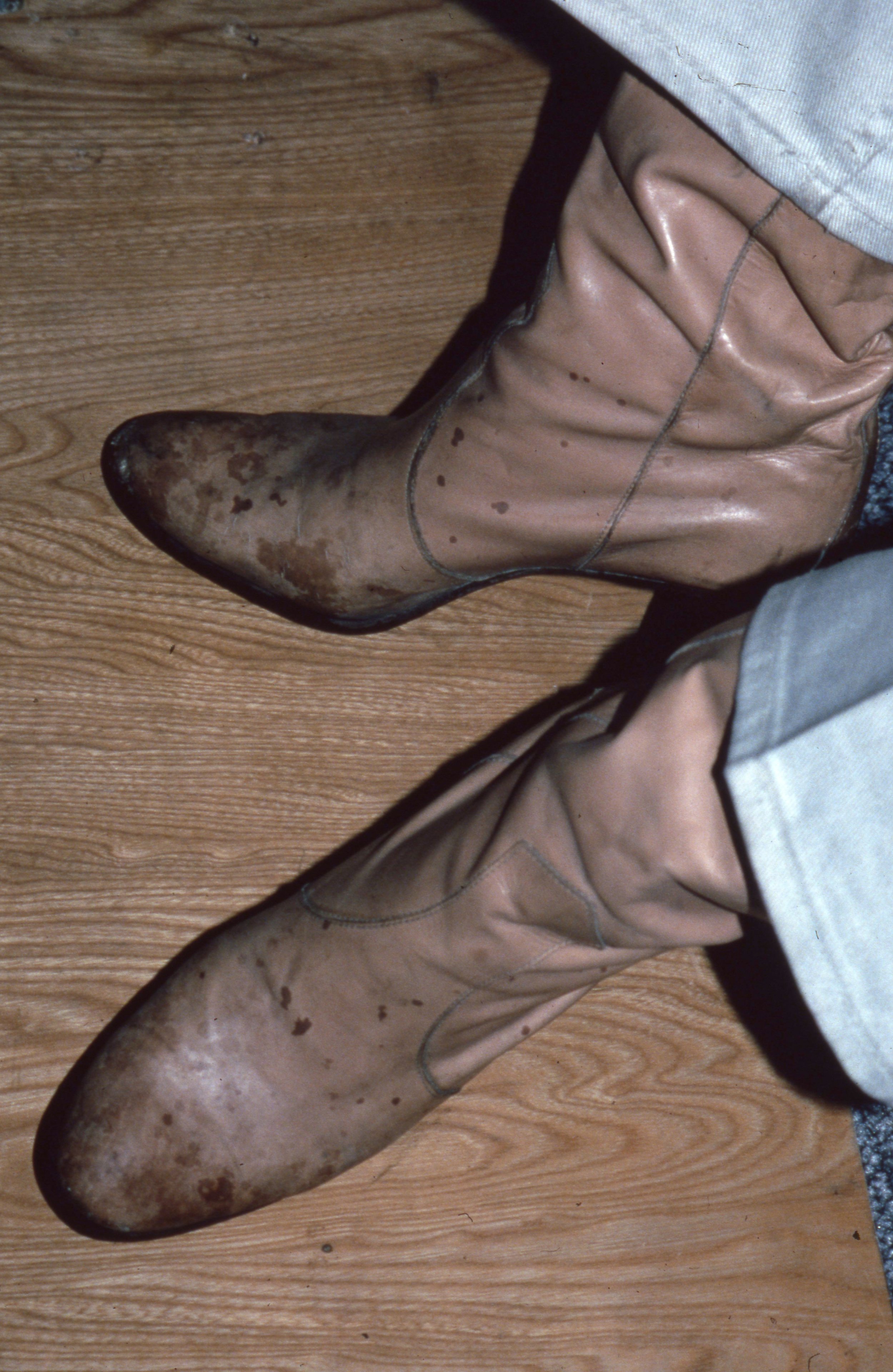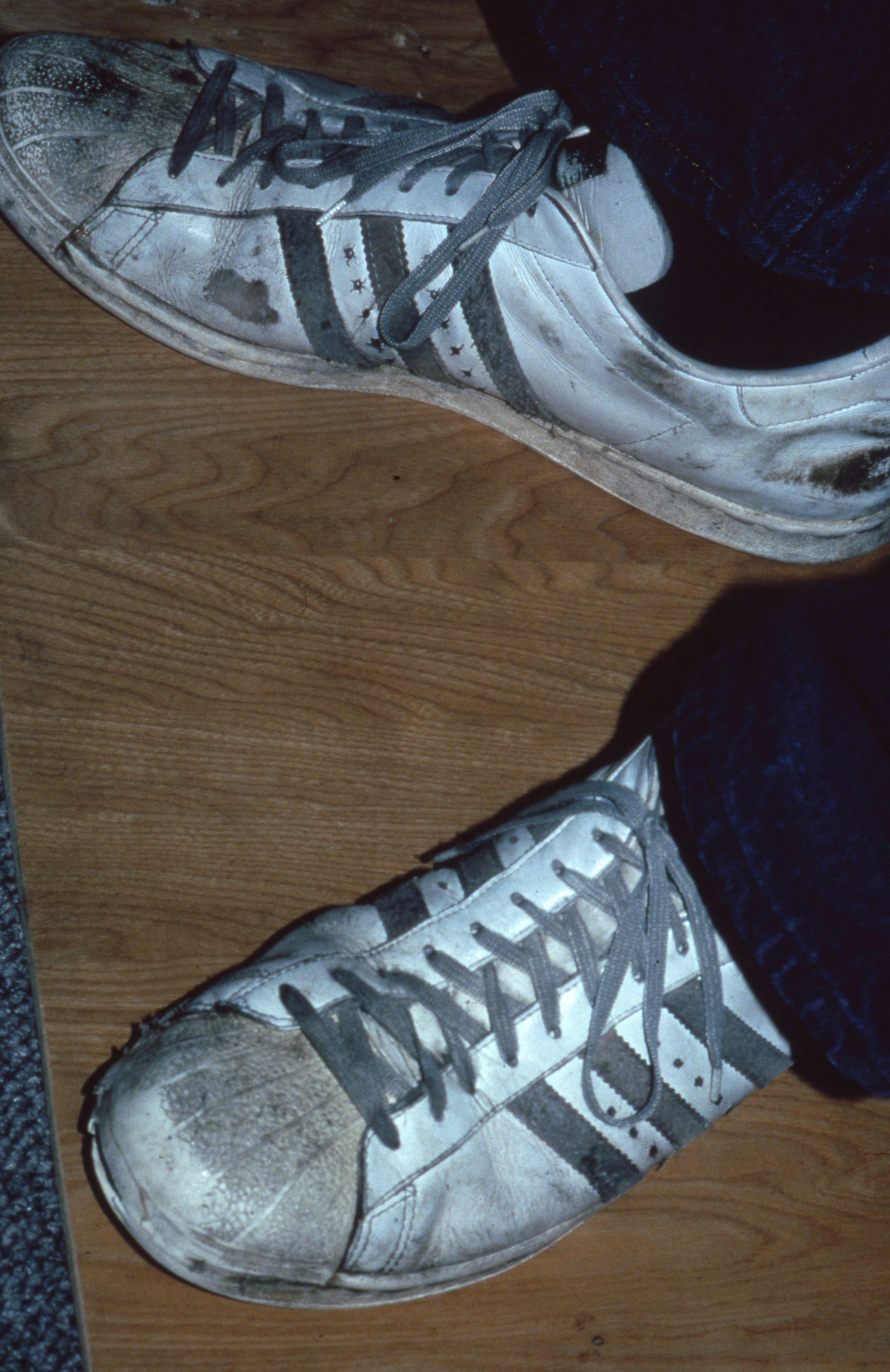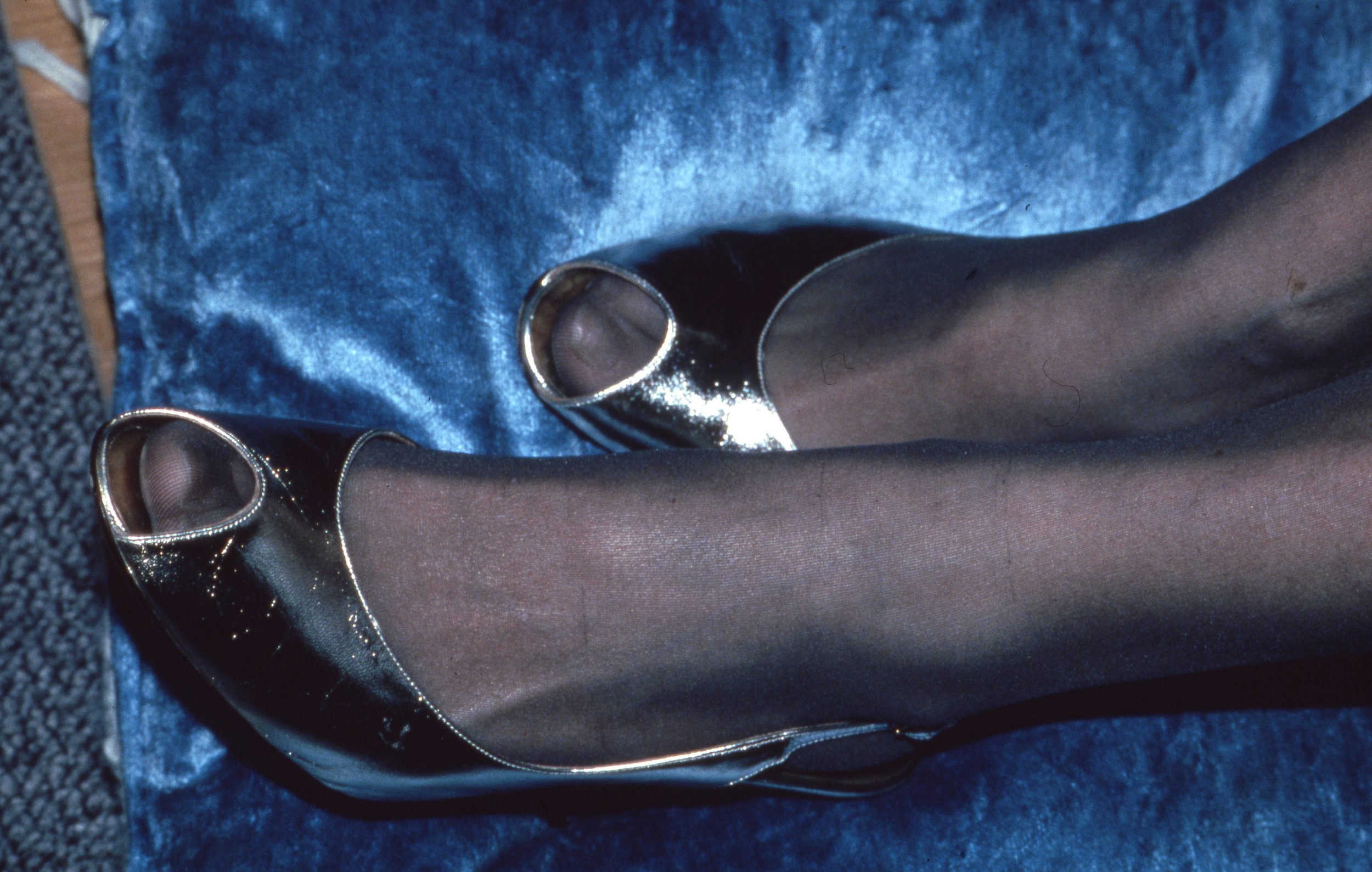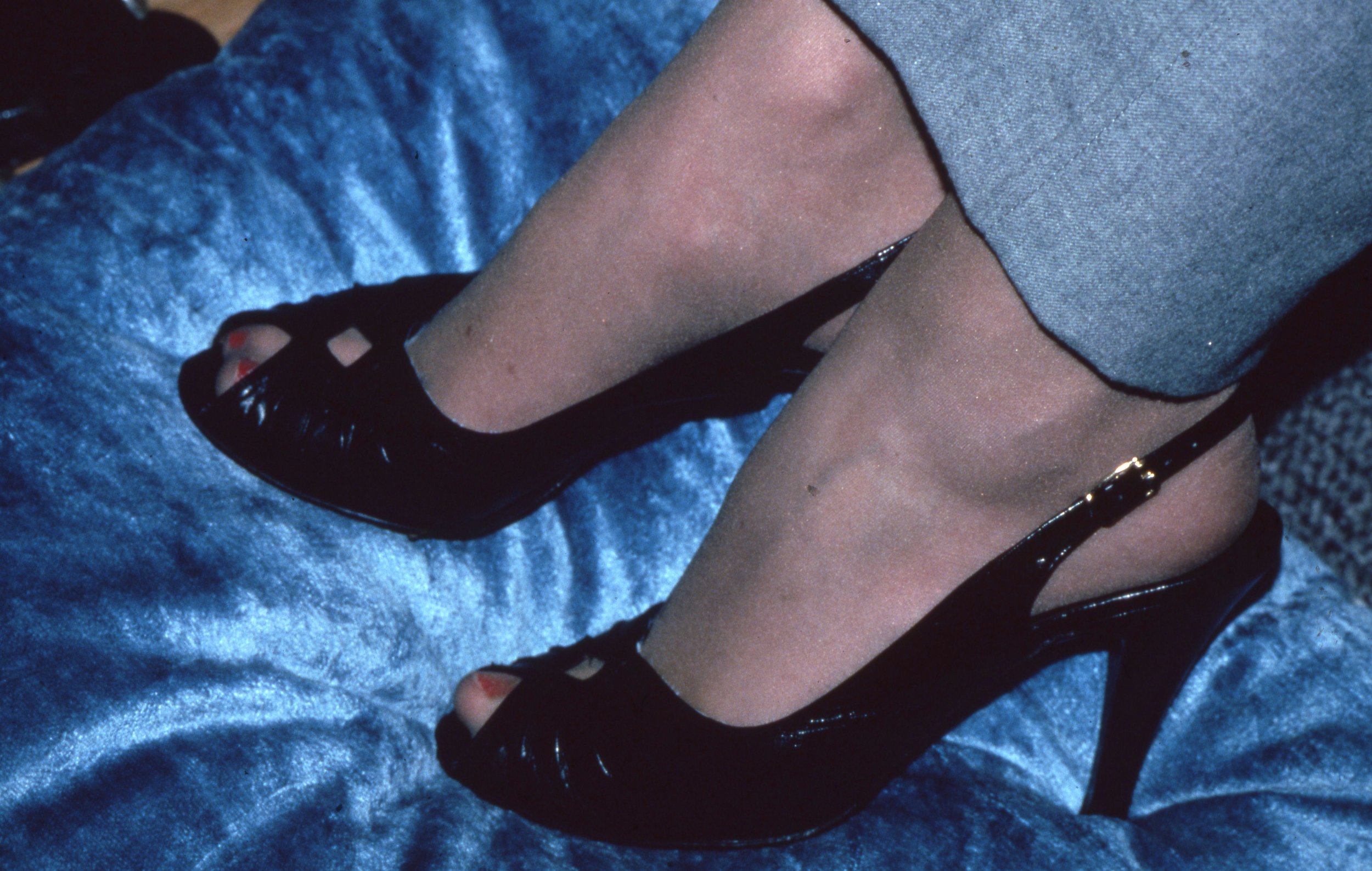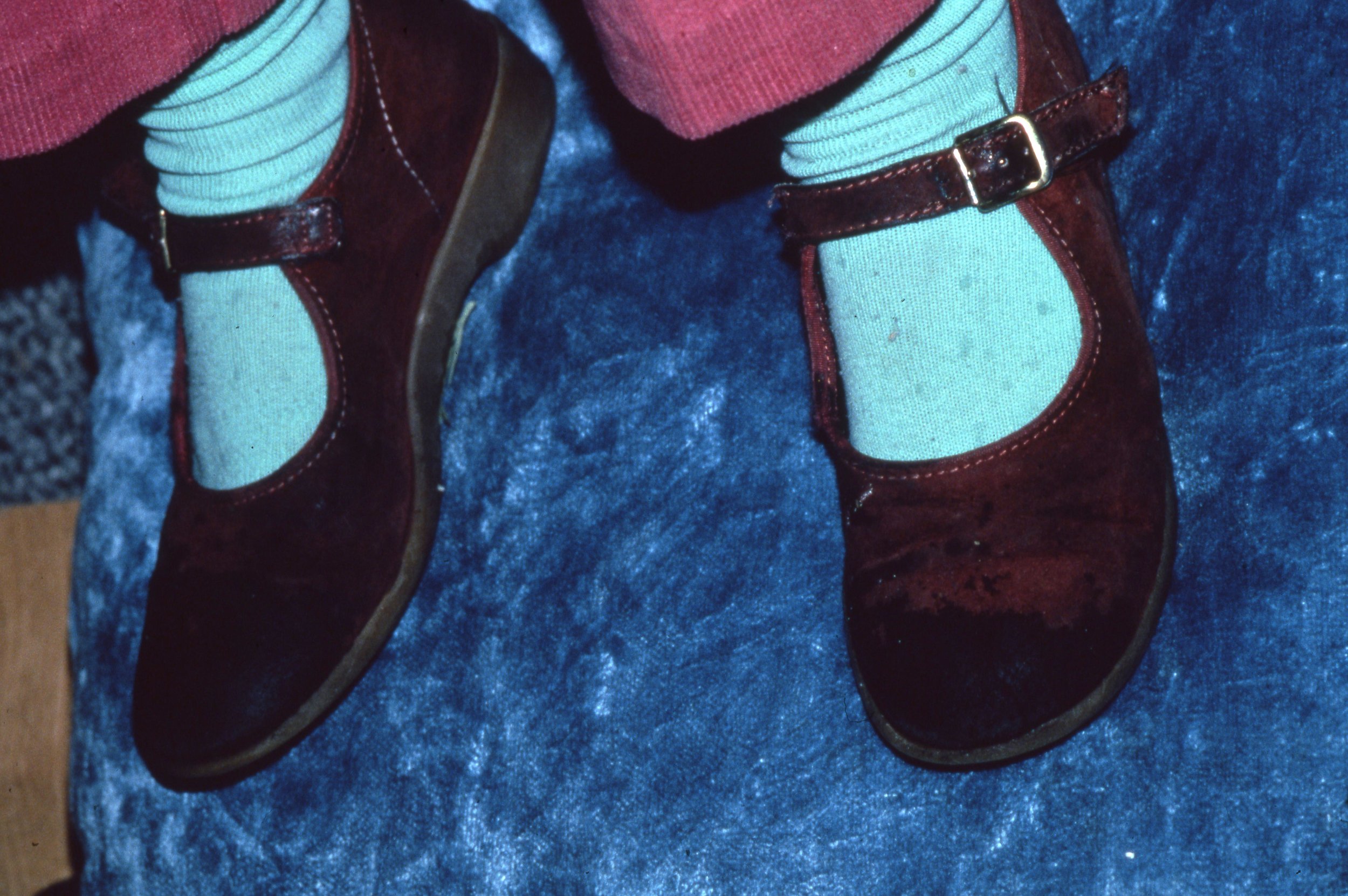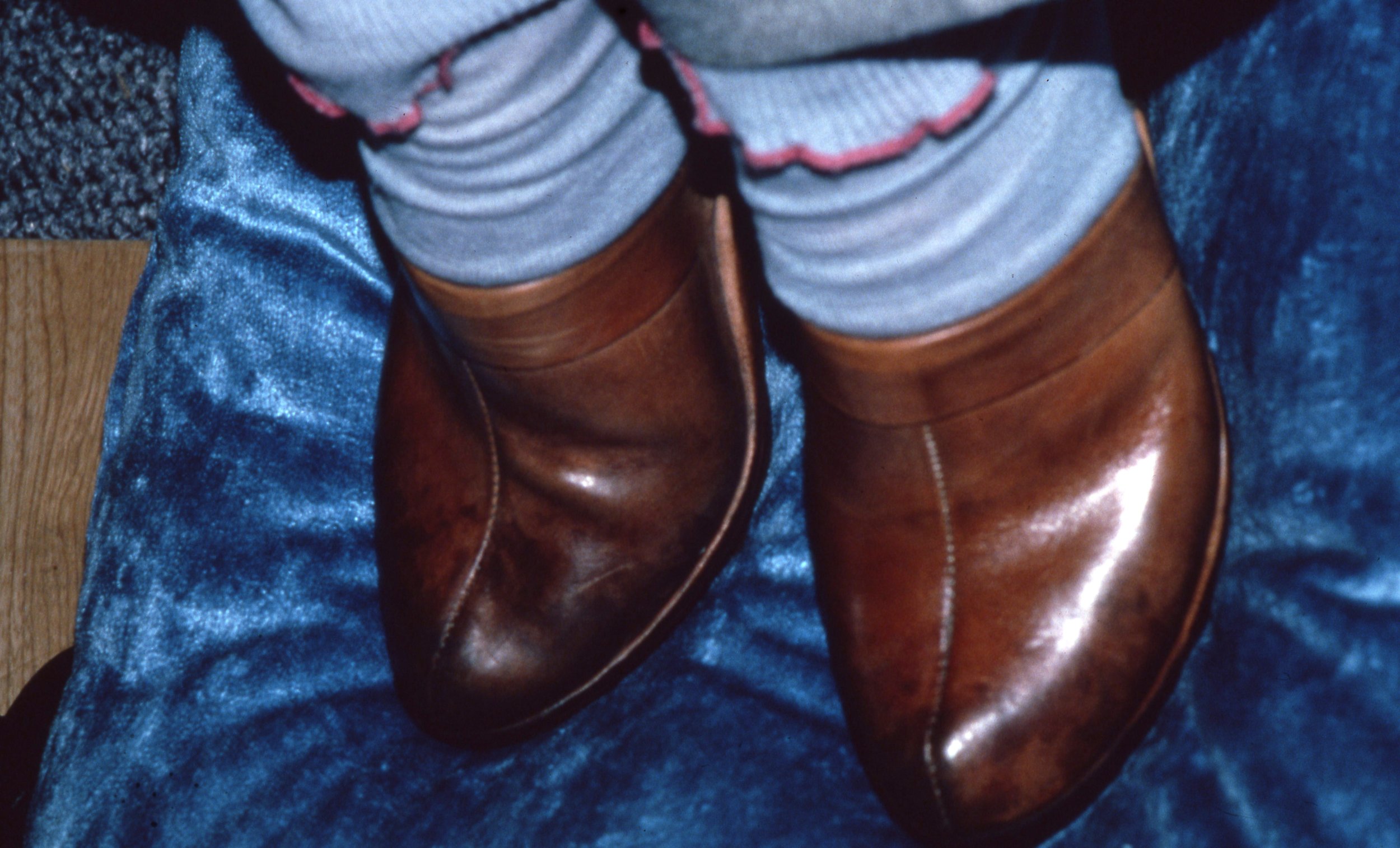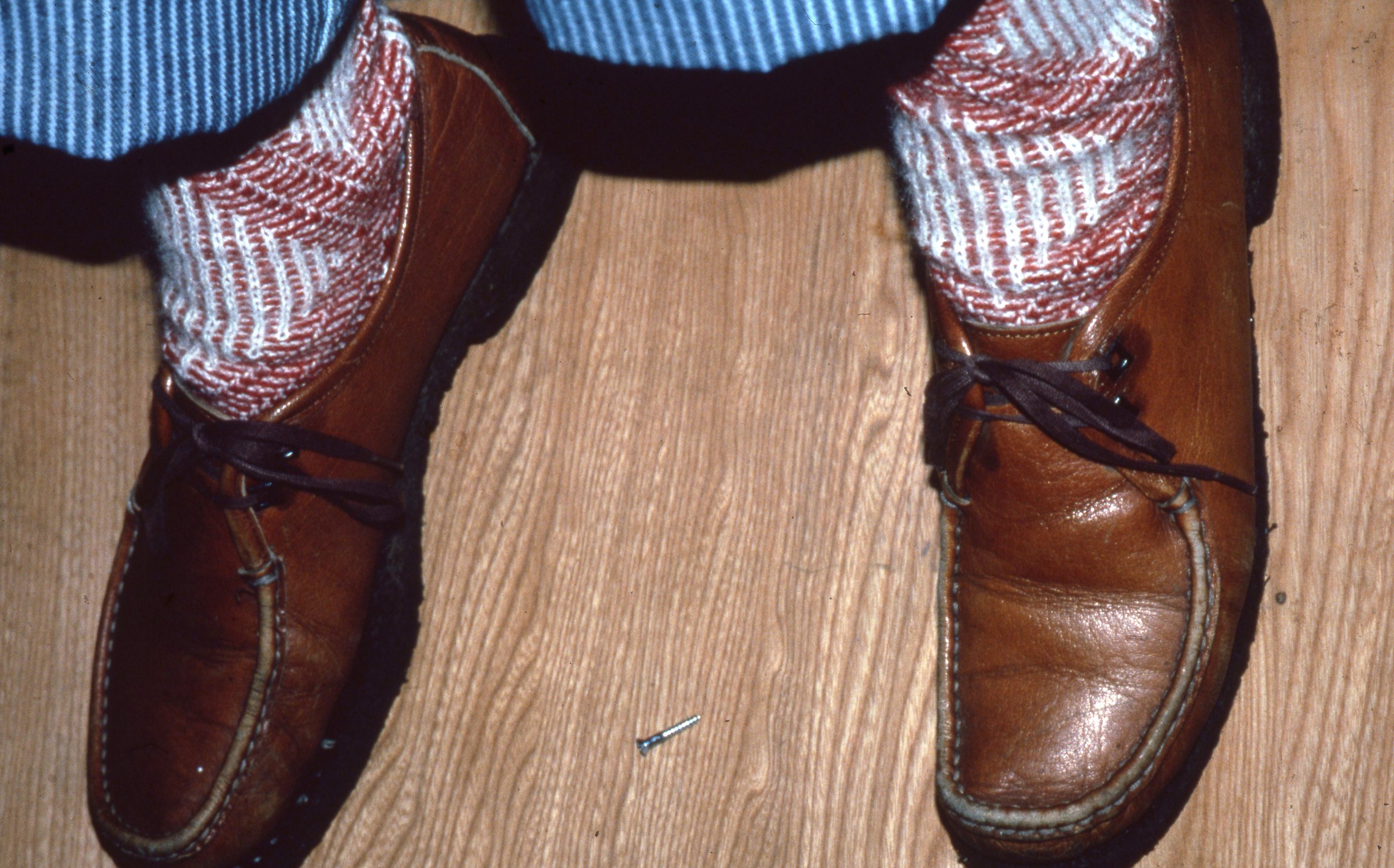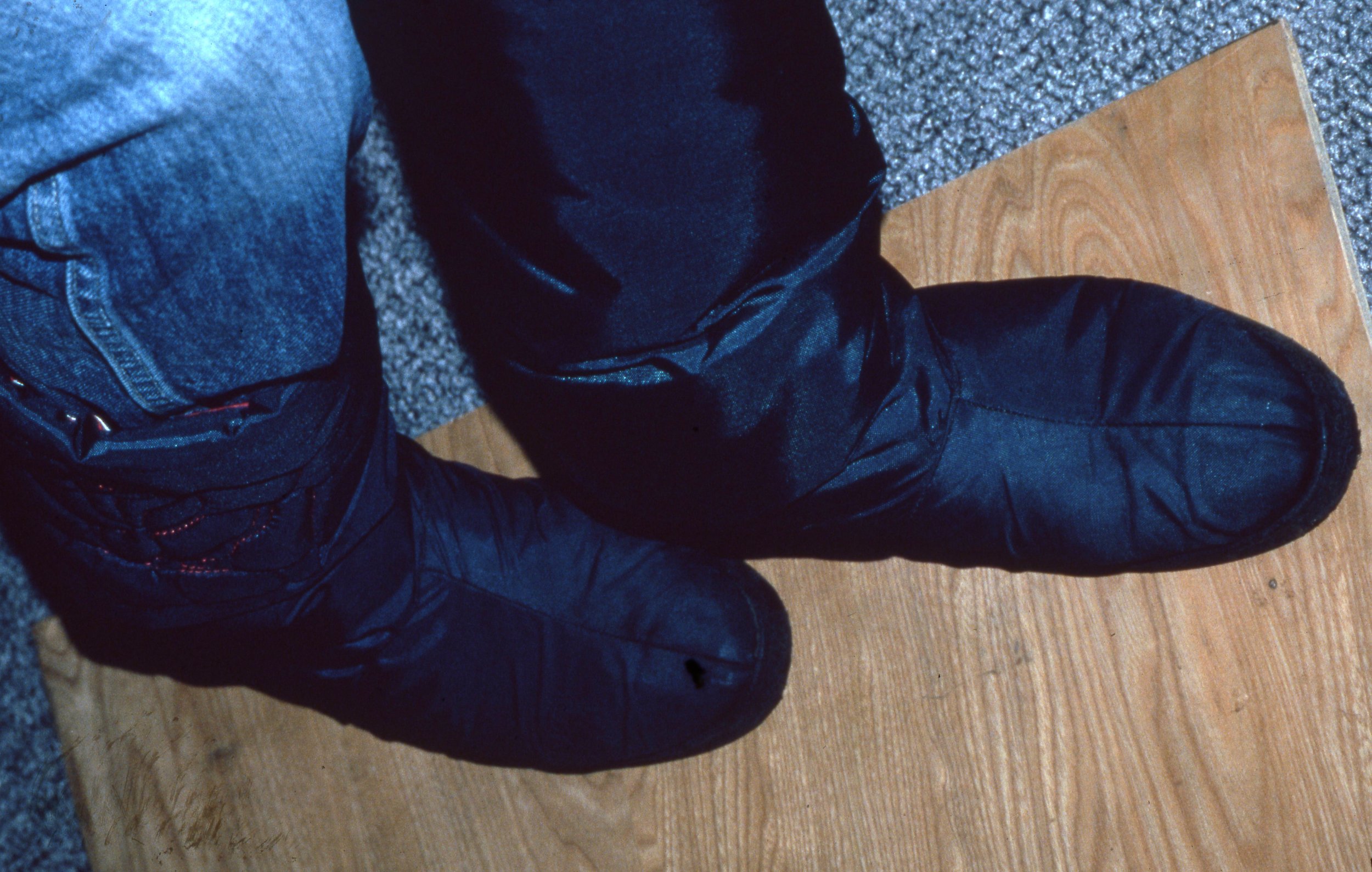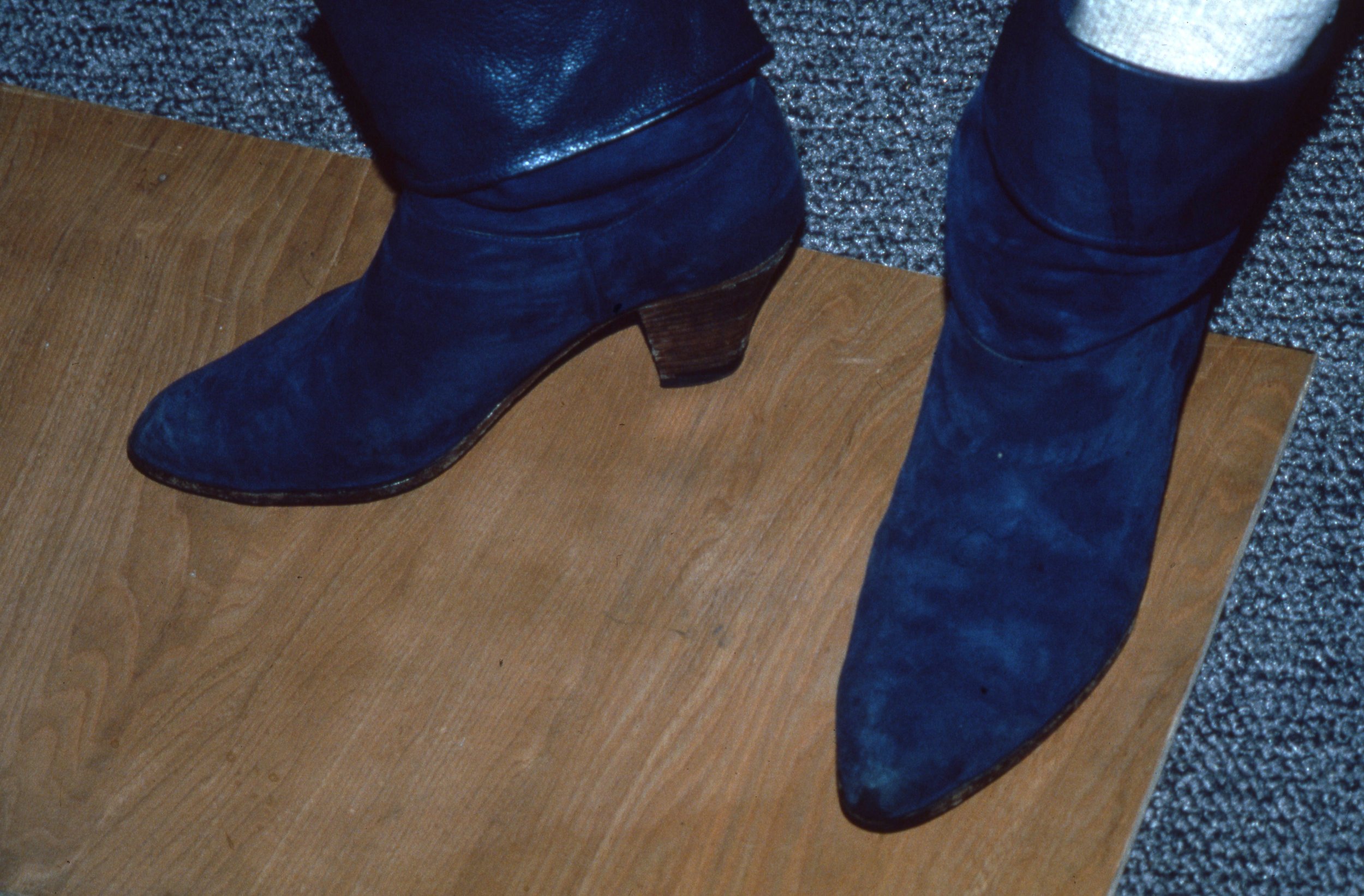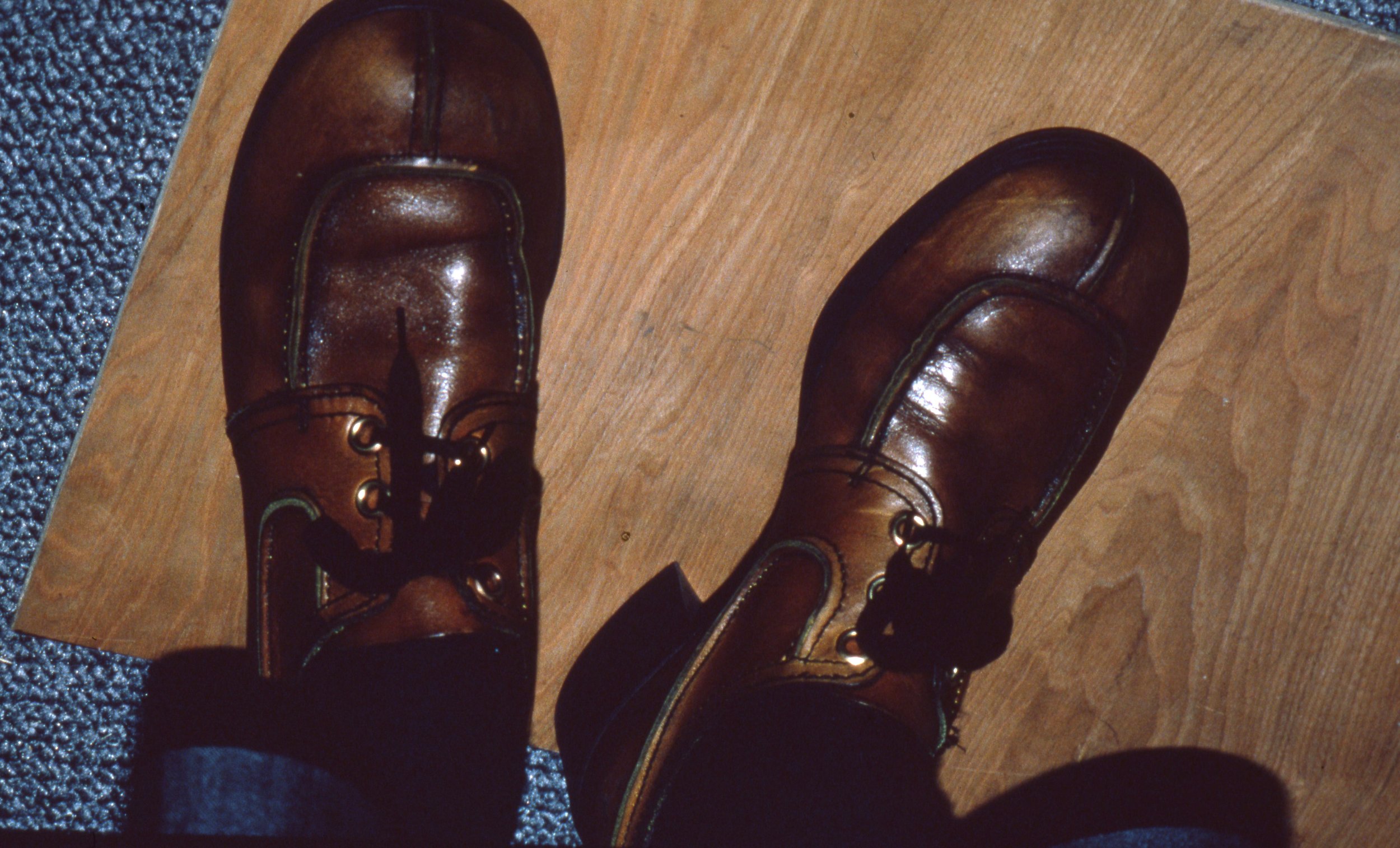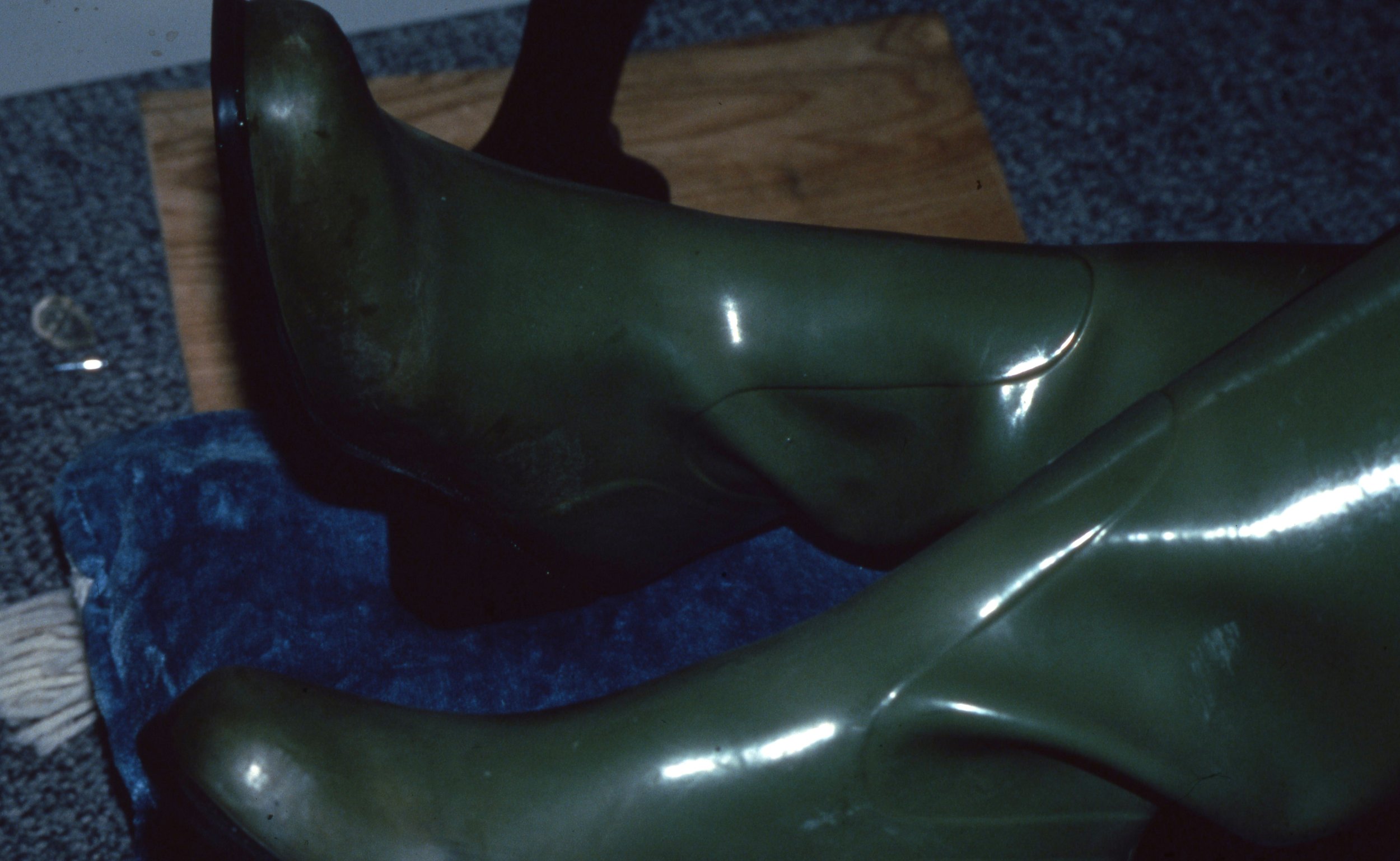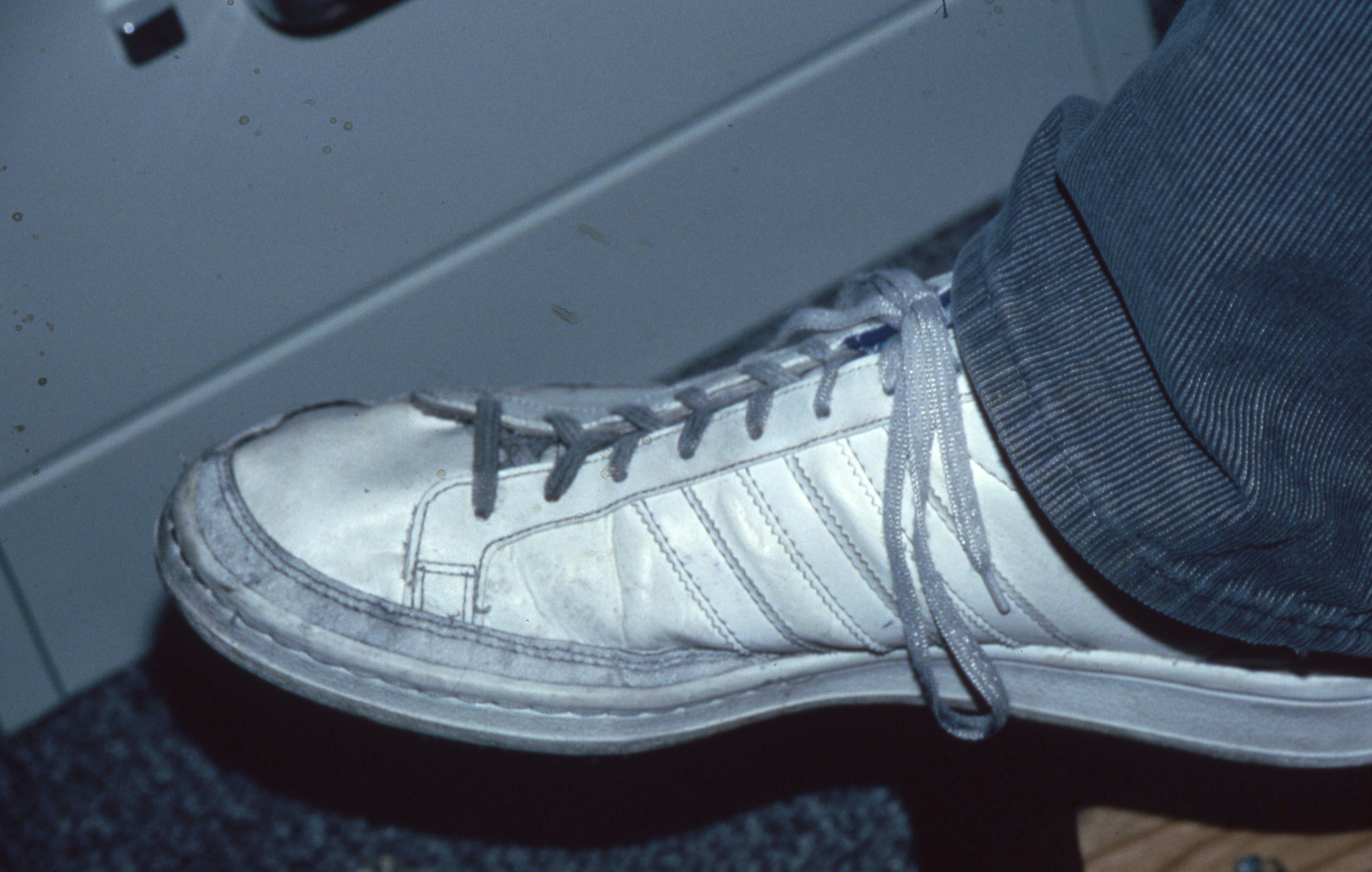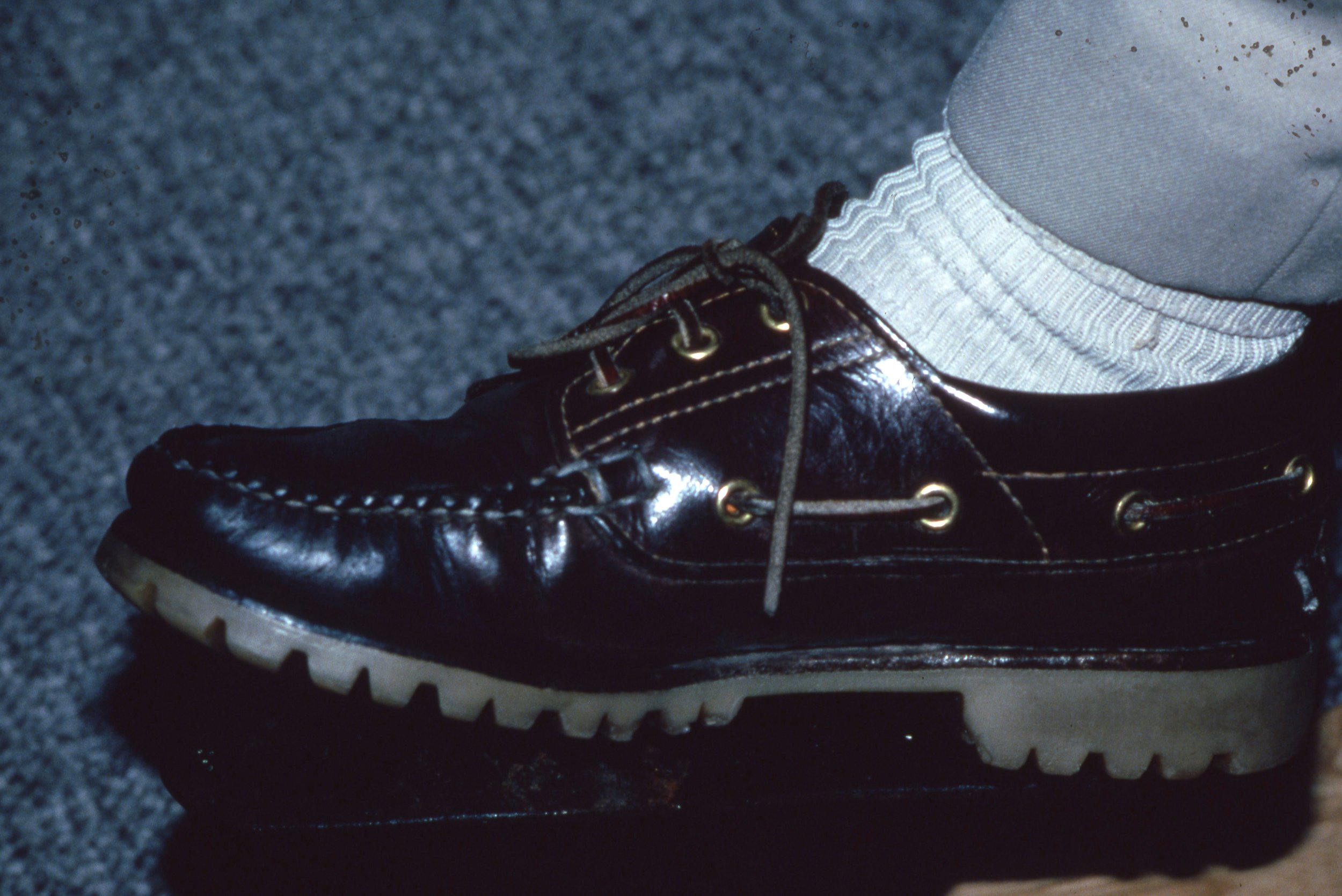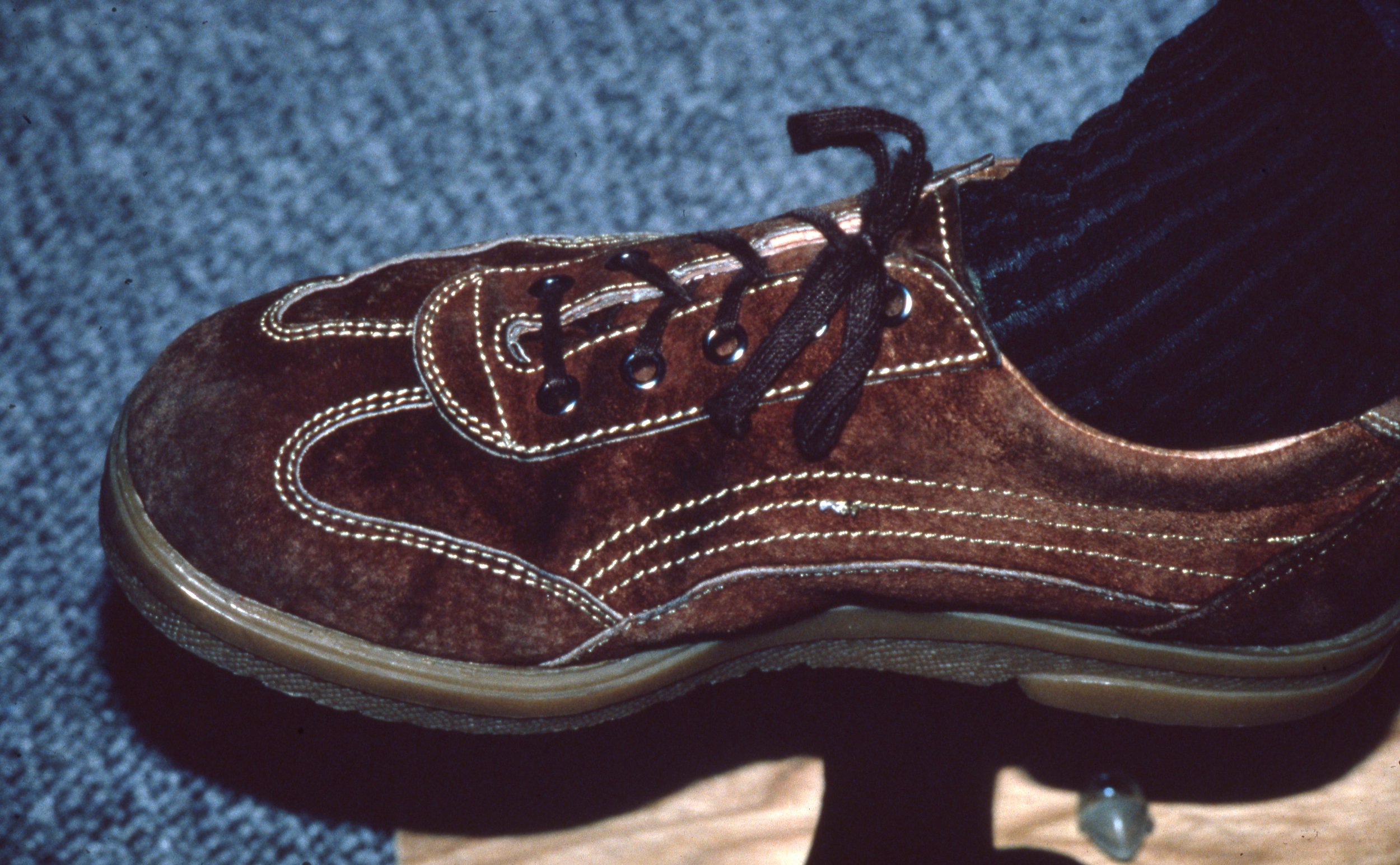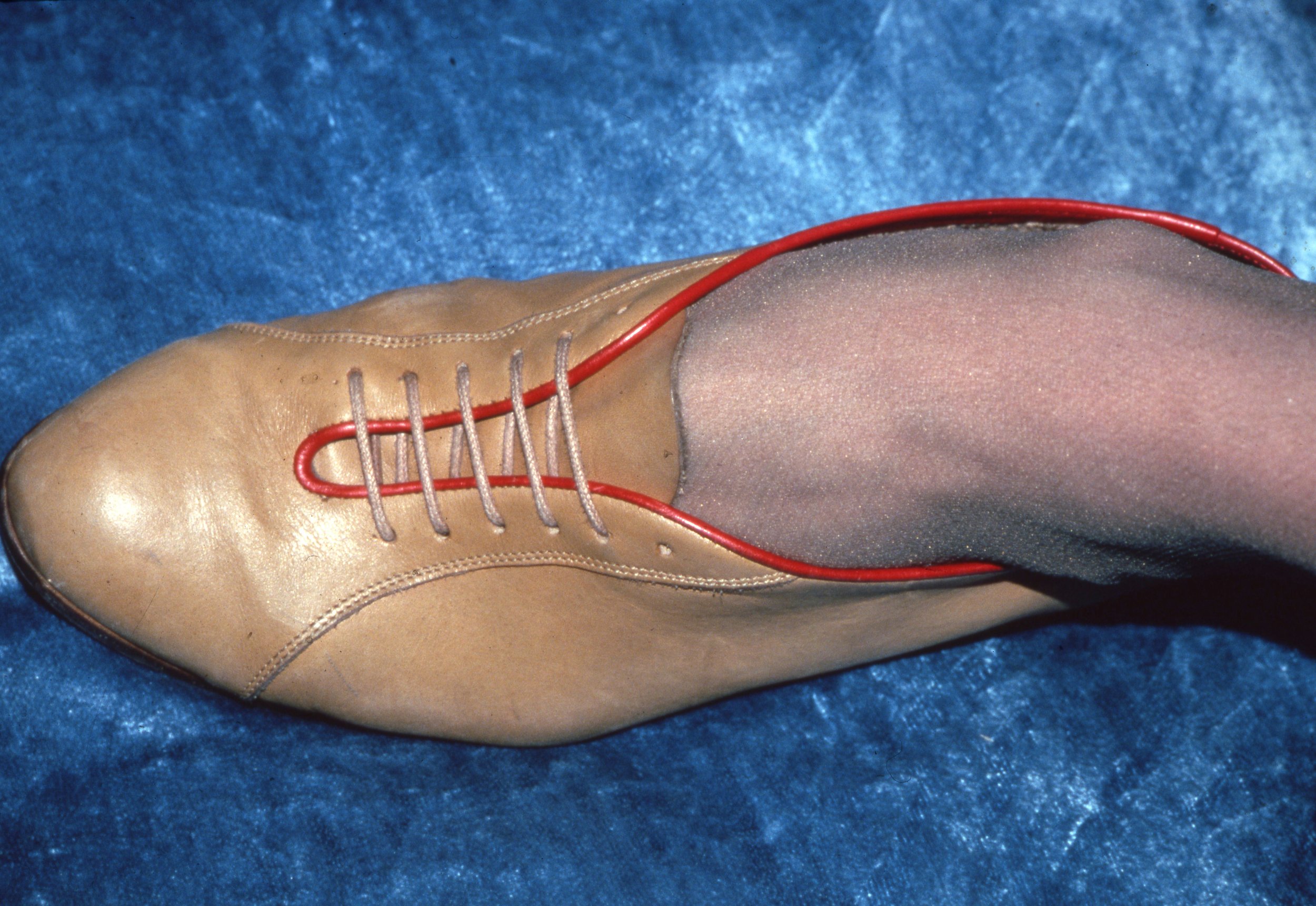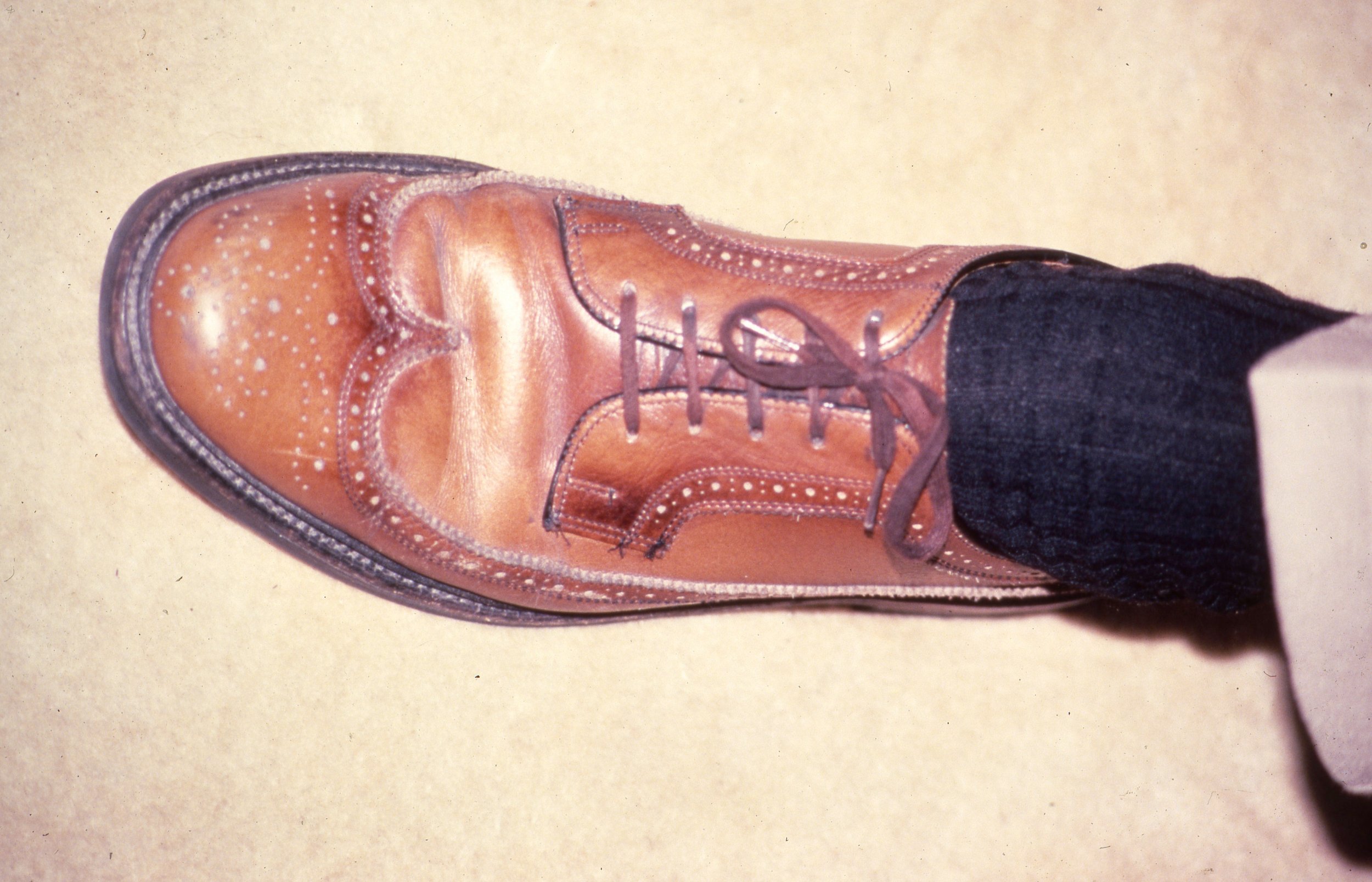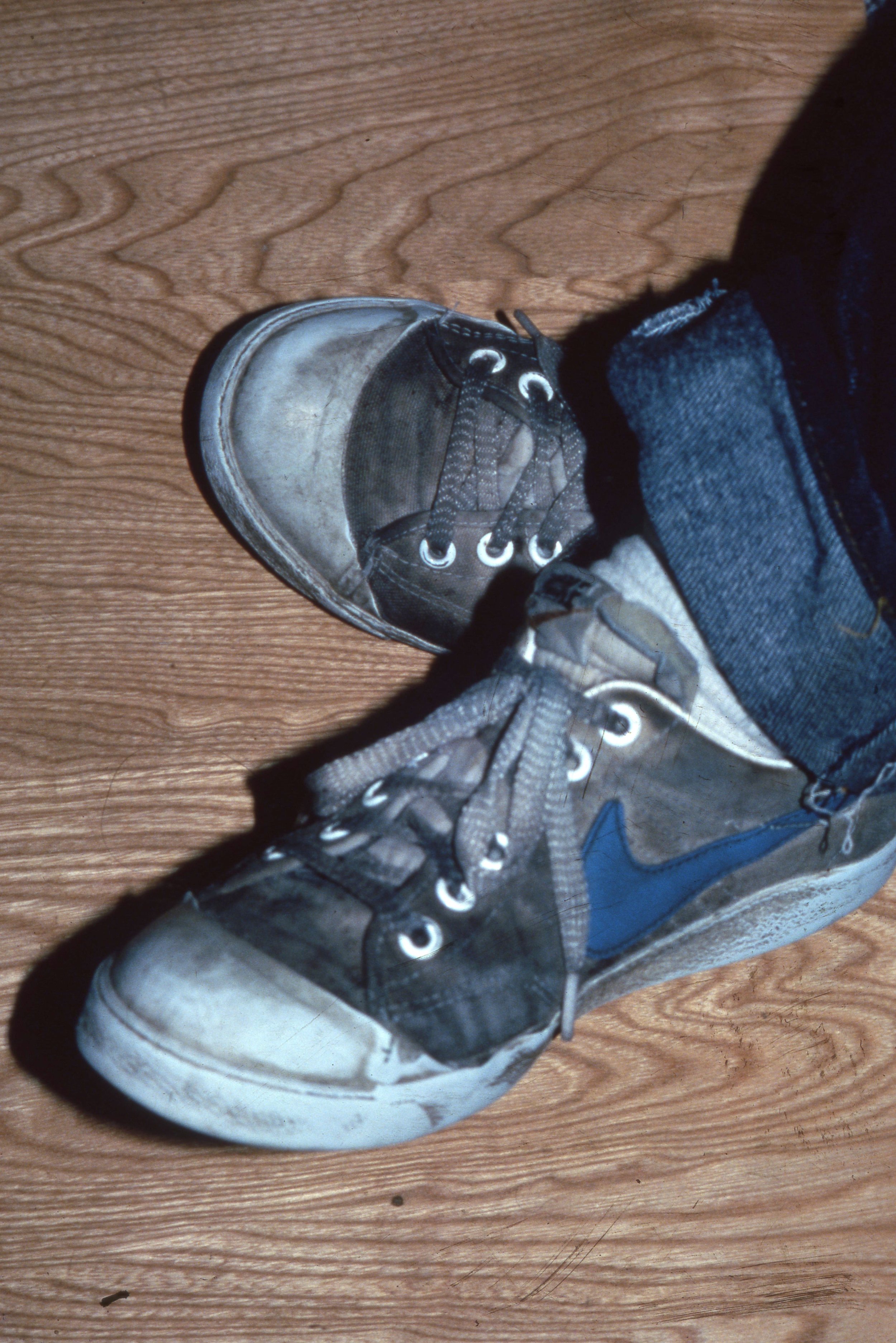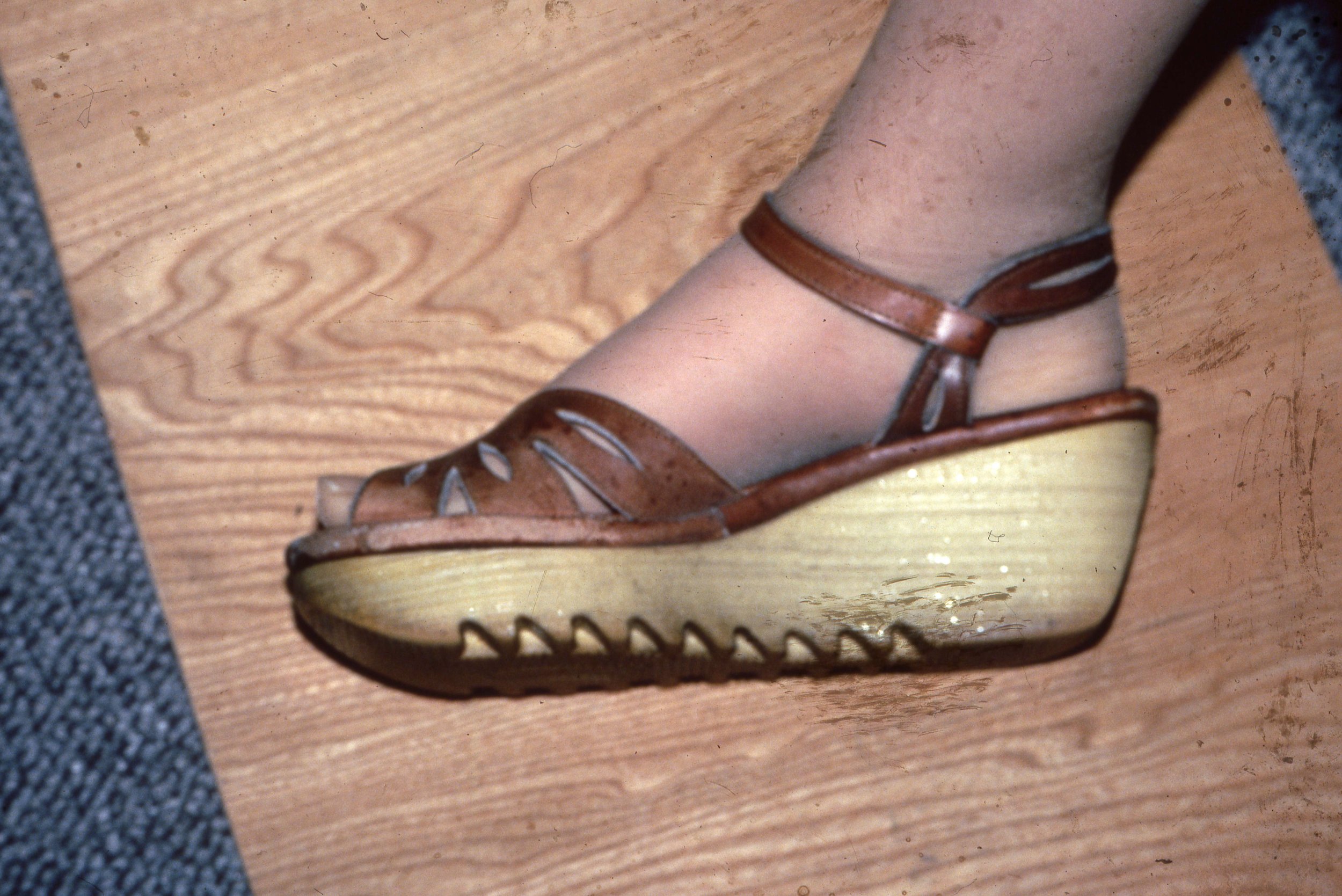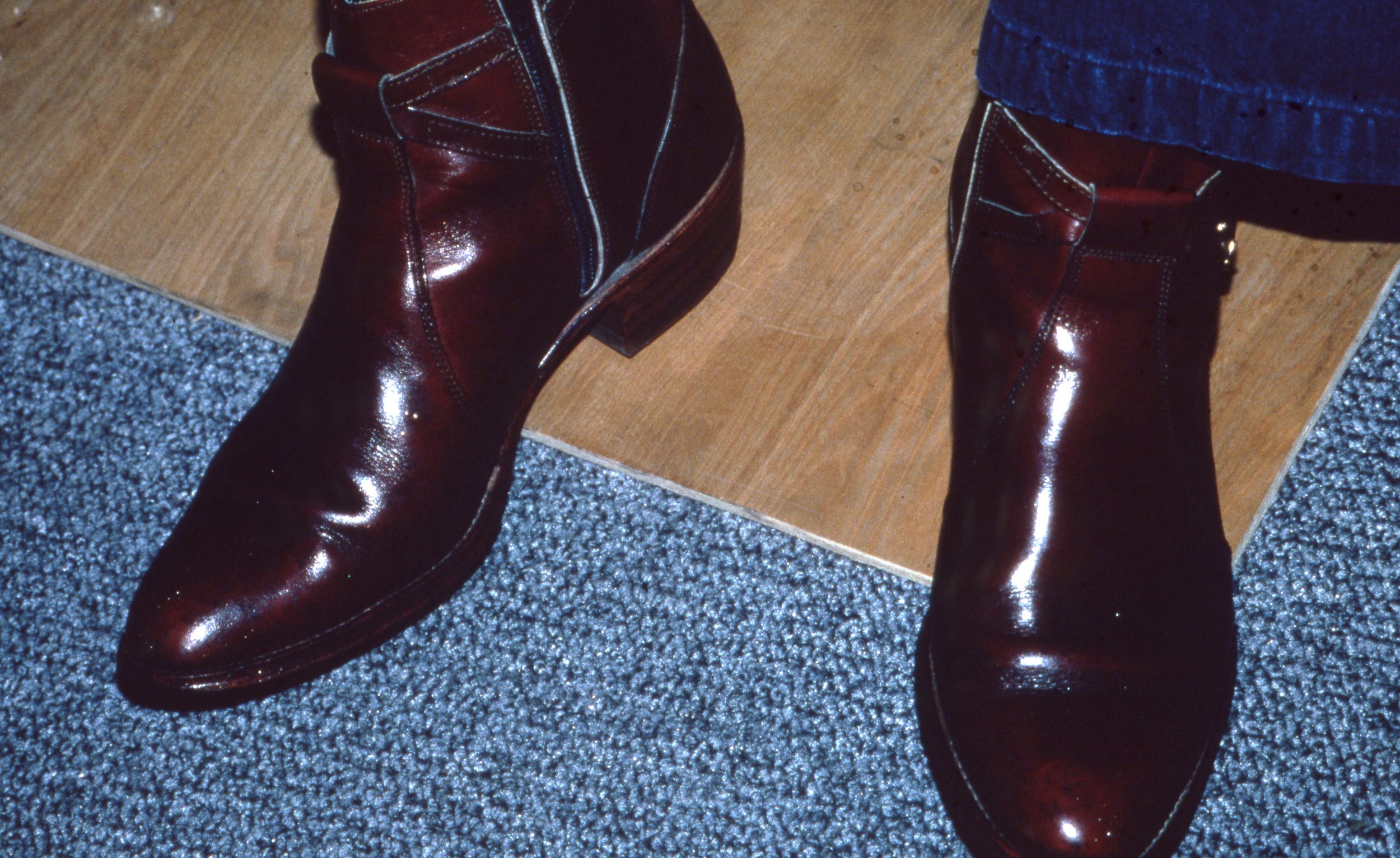Sonya Rapoport’s Shoe-Field Installation at Media Gallery, San Francisco, 1986. Photograph: Marion Gray
Shoe-Field (1982-89) is one of Sonya Rapoport’s most widely-recognized and engaging projects, and an early example of home computers being used to create interactive artwork in a gallery context. Building on other “audience participation performances” such as Biorhythm (1980-84), Rapoport produced a social intervention that viewers described as both an enjoyable and humorous way to get to know themselves and others - as well as a paranoid experience of being subjected to assessment and monitoring by computer.
Rapoport had long been interested in shoes as a pleasurable fashion accessory, a consumer product marketed to women, and a potent symbol of femininity. The research-based computer printout drawing Bonito Rapoport Shoes (1978) tabulated and plotted information about Rapoport’s shoe collection, including material properties, where she bought them, and why. This was presented alongside a visually-rich feminist reappraisal of the history of footwear.
In 1982, at a home computer store in Berkeley, Rapoport arranged 44 pairs of her shoes in the window, and took Polaroids of the shoes that participants happened to have worn to the event. She asked them questions about their shoes–how much they liked them and why–and entered this information into a home computer present in the gallery, which assigned them a shoe-psyche number from -2 to +2. This was at a time before the release of the Macintosh in 1984, when such machines were still an unusual sight, and mainly used for business.
Slide show of shoes from Shoe-Field exhibition at Media Gallery, San Francisco, 1986. Slide film.
The resulting data and images were subsequently used as raw material for new work. Later in 1982, working with programmer John Watson, Rapoport fed the shoe-psyche data into a program that used the inverse-square law from electromagnetic field theory to calculate a map of all 76 subjects, printed as a dot-matrix ASCII map.
Shoe-Field Map, 1982. Dot matrix print on paper. Dimensions variable.
Rapoport recorded the data she gathered in the artist book Why I Wear These Shoes (1983). Later, she produced the extensive, ten-folio Shoe-Field Computer Printout (1986) that, in the manner of a science paper, systematically explored each viewer’s response, tabulated data about their relationship to their shoes, and visualized their shoe-psyche numbers as ASCII images.
Expanded iterations of the participation performance were exhibited in Shoe-Field at Media Gallery in San Francisco in 1986 and Richmond Art Center in 1989. These offered a more systematized version of the interactive experience, including having participants place their shoes on a floor of Shoe-Psyche Tiles, interacting directly with the computer to answer questions about their shoes, and receiving a printed a compounded shoe-psyche pattern that compared their shoes with other shoes that they coveted along with a fortune-cookie type reading.
Notably, Rapoport published an artist book and software for the exhibition ART COM Software: Digital Concepts and Expressions at New York University in 1988. This included a diskette with the Shoe-Field program, a booklet explaining the Shoe-Field concept, and a set of cards with images of shoes from the original performance.
Shoe-Field: Our Fate Is On Our Feet, 1988. Artist book with floppy disk, sleeve, instructions, and shoe cards (shoe horn, shoe, and tile are not part of book). Dimensions variable.
Rapoport also produced two videos that documented the Shoe-Field exhibitions.
Shoe-Field both embraces and is a parody of reductive scientific analysis as applied to the complexities of lived experience. It makes use of methods appropriated from marketing focus groups, anthropological studies, computer analytics, and data visualization. By applying the deterministic laws of physics to a messy social situation, Rapoport highlighted how human nature resists being quantified. And yet this project foretold the way technology companies would gather and process “big data” about our feelings, choices, and habits in order to sell us consumer goods - including shoes!







